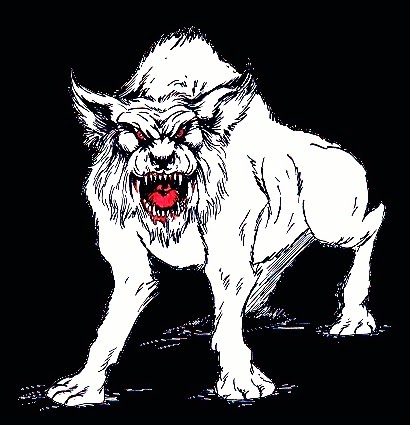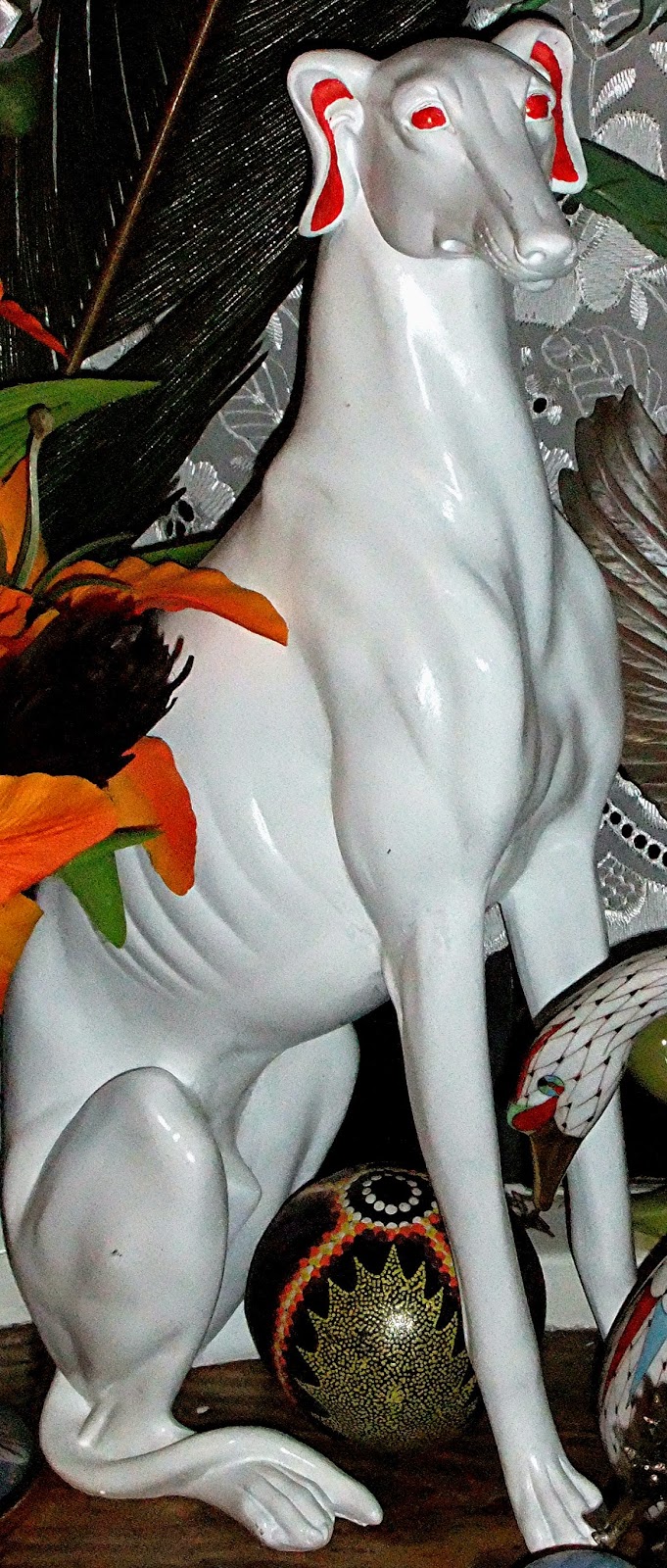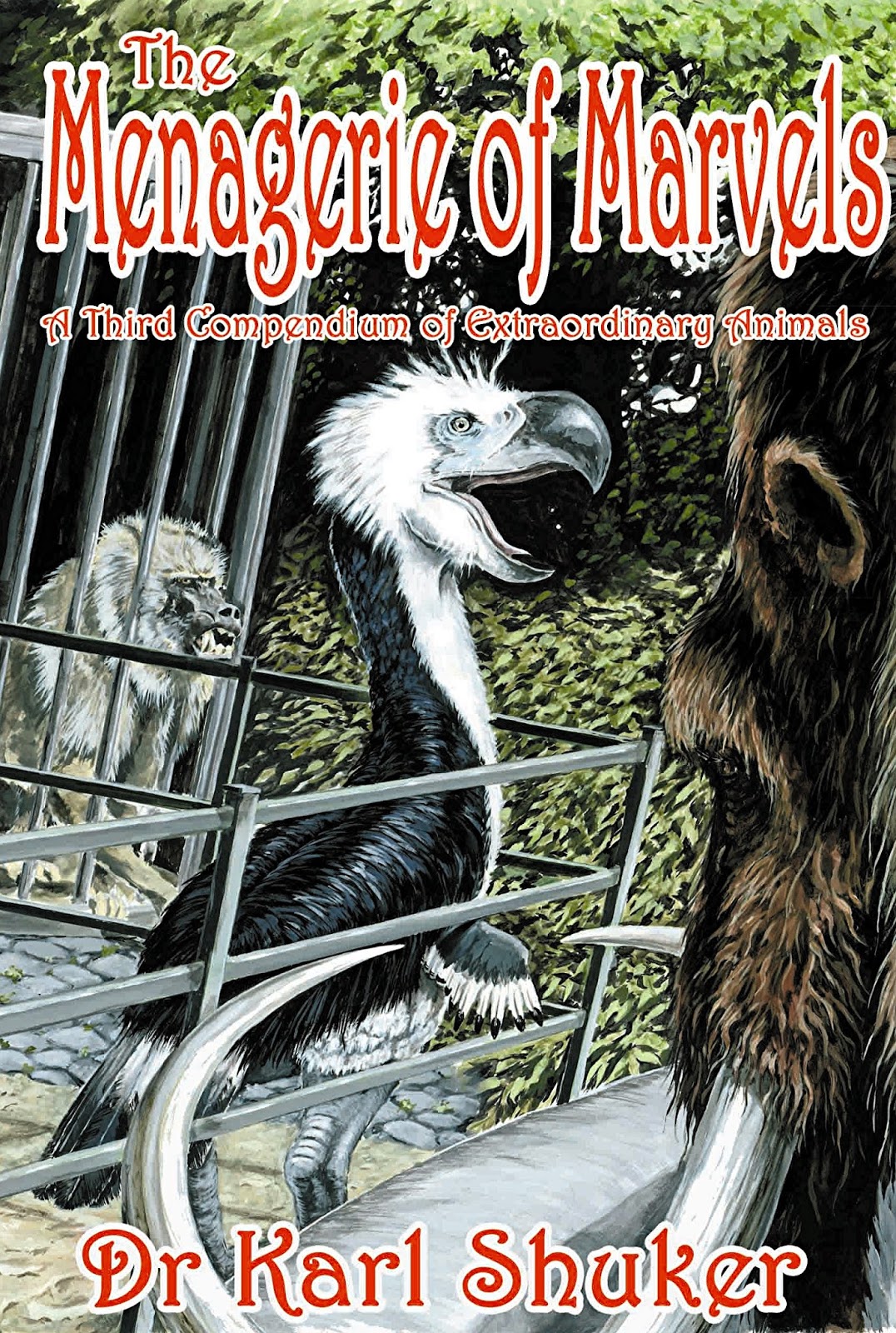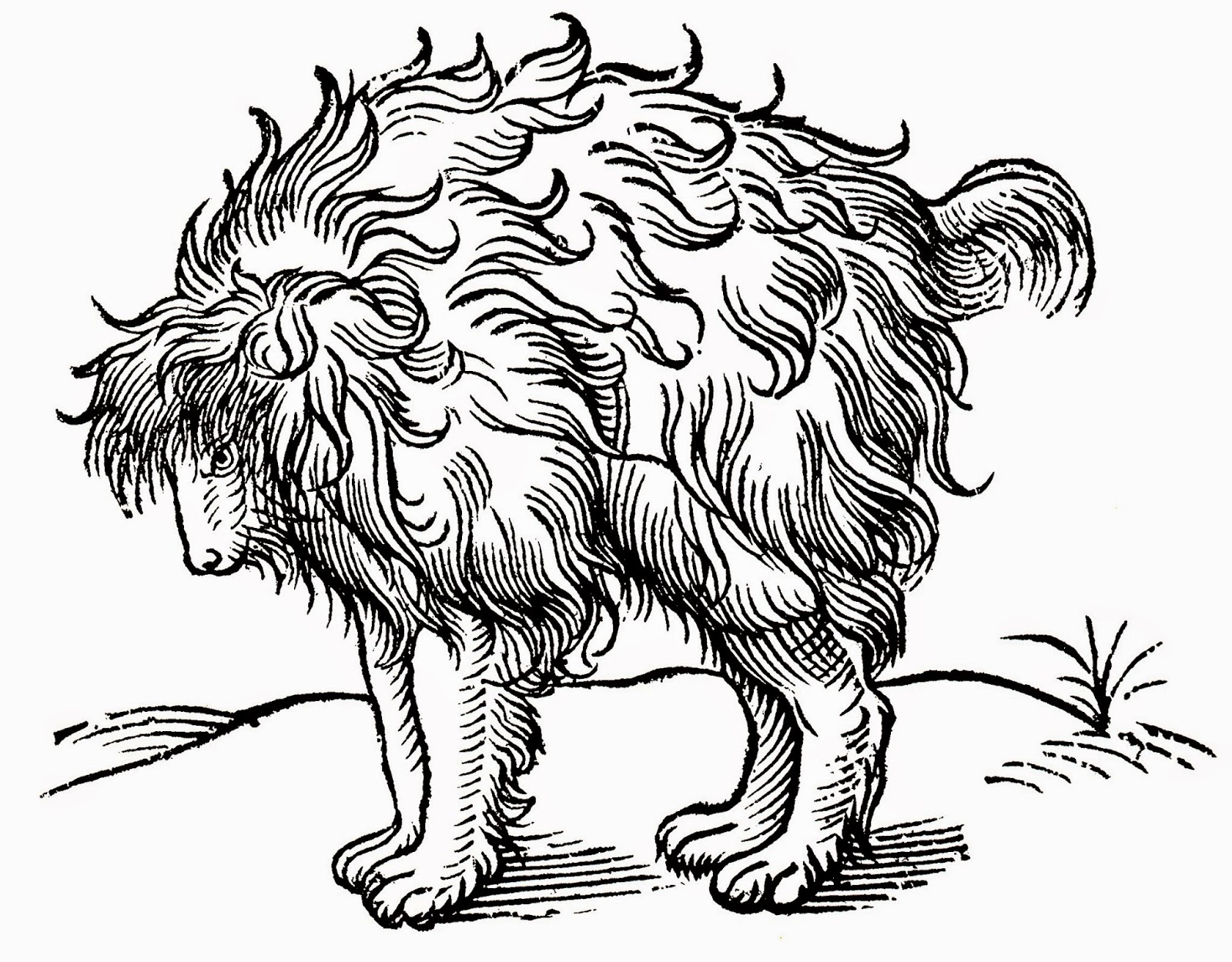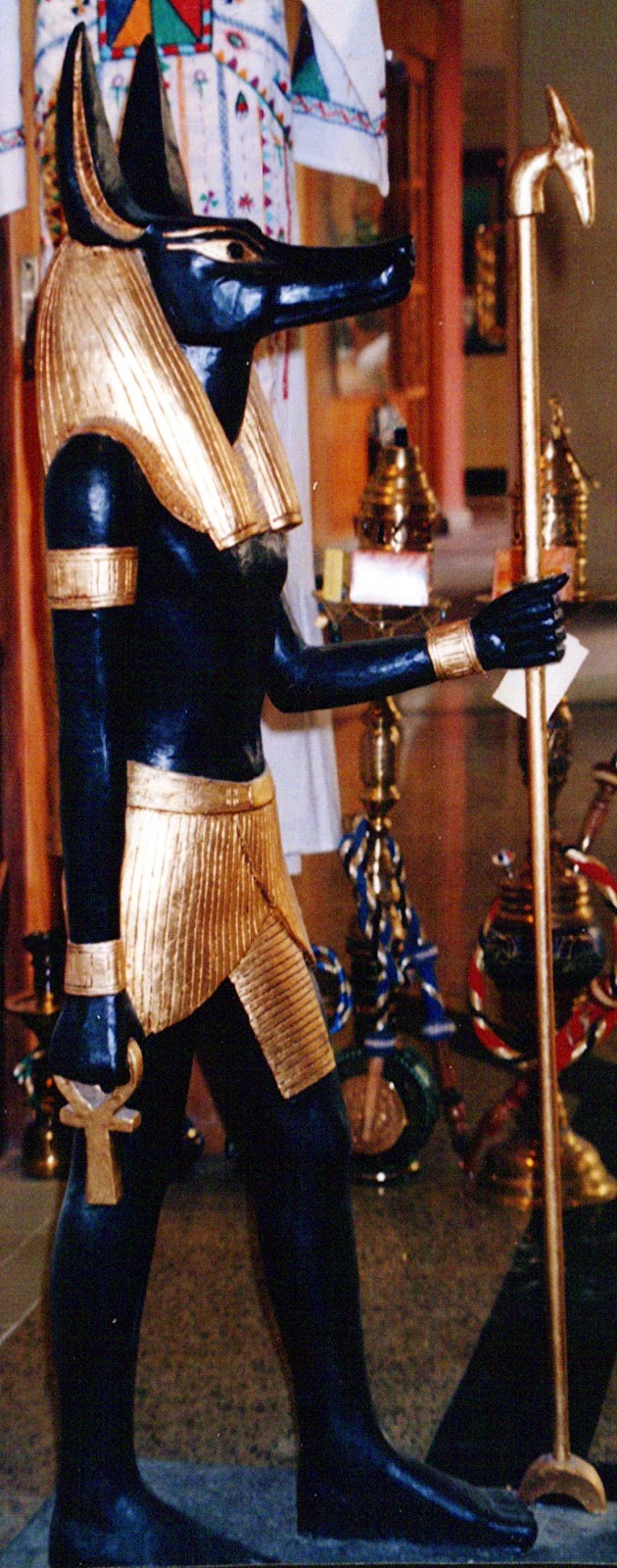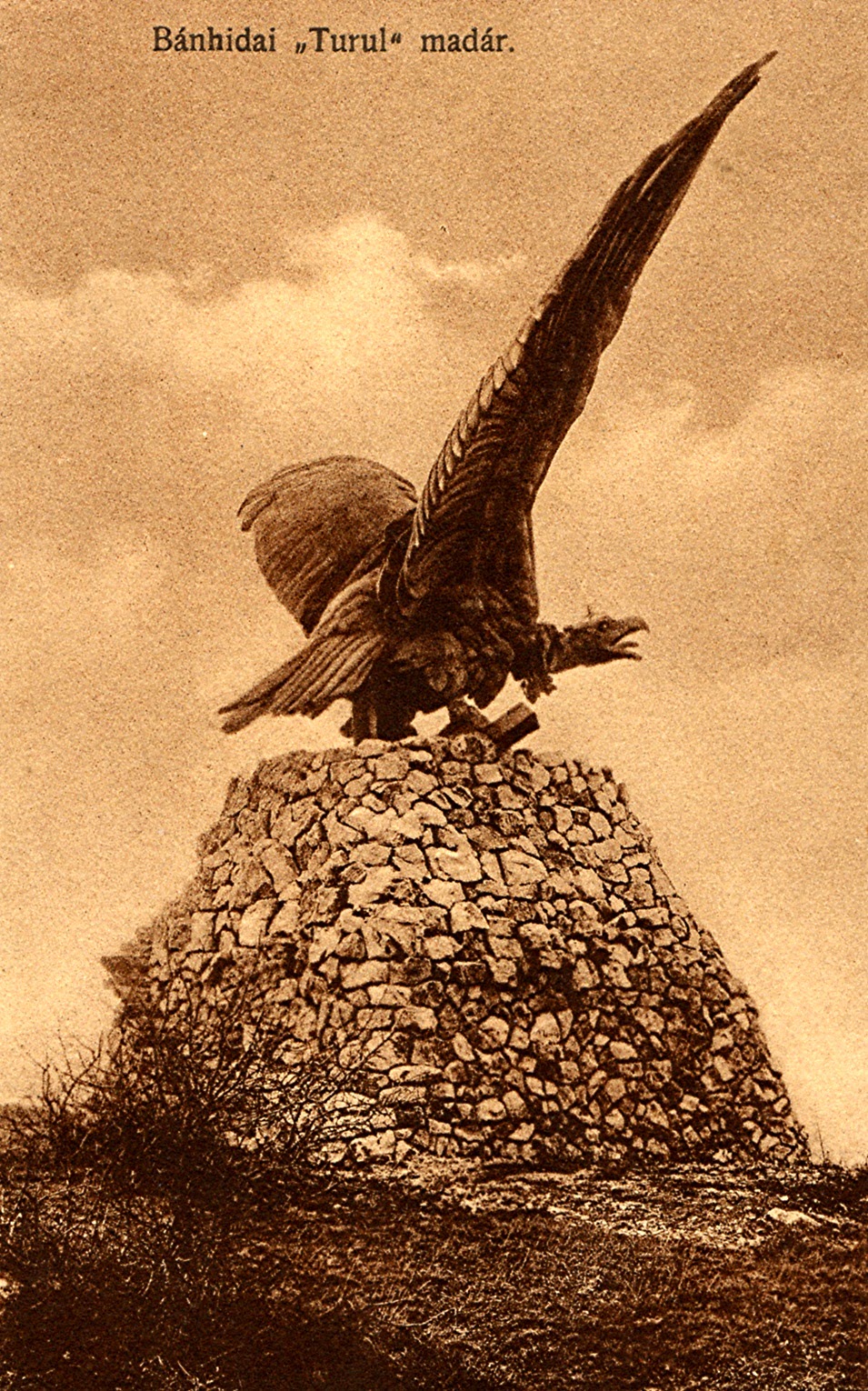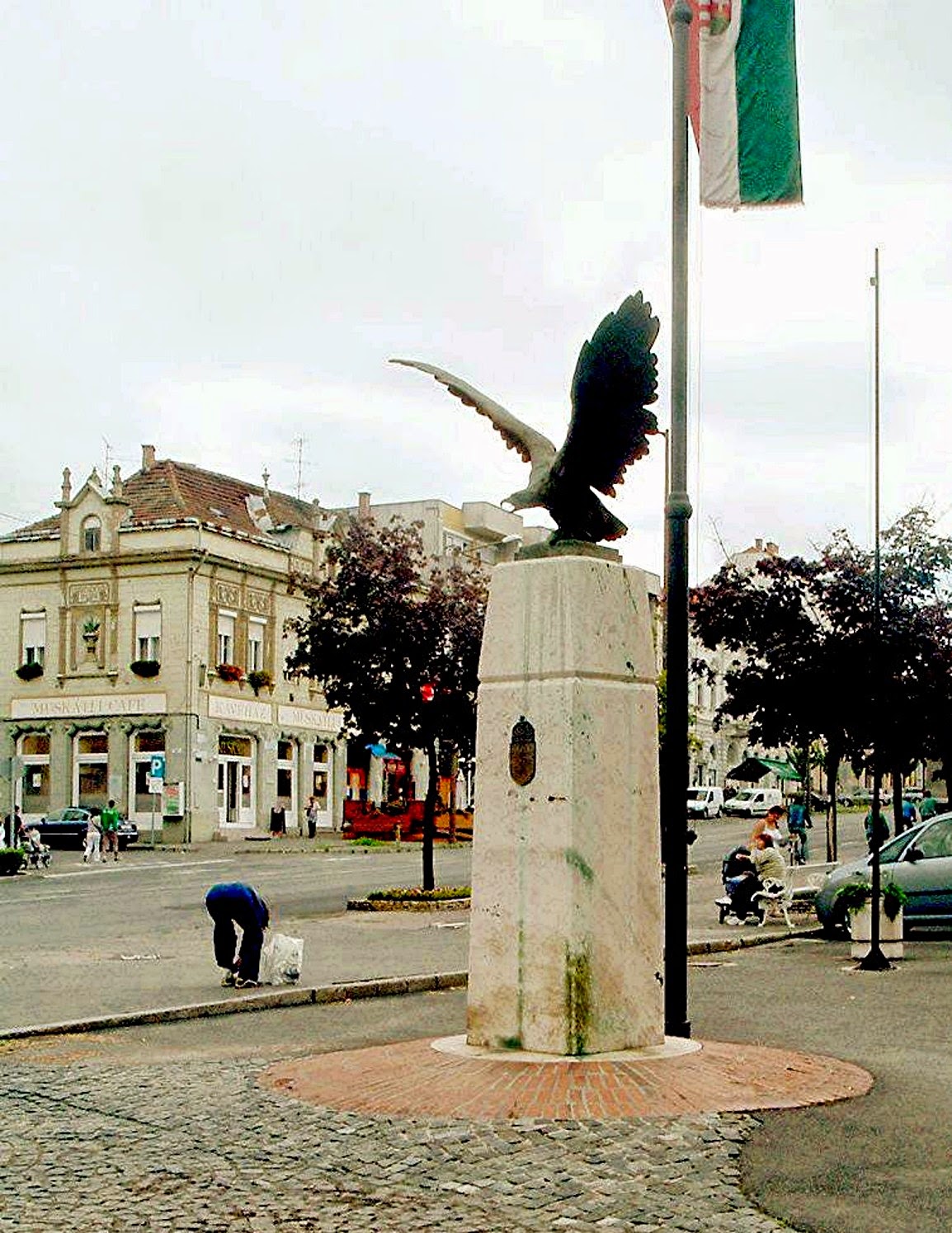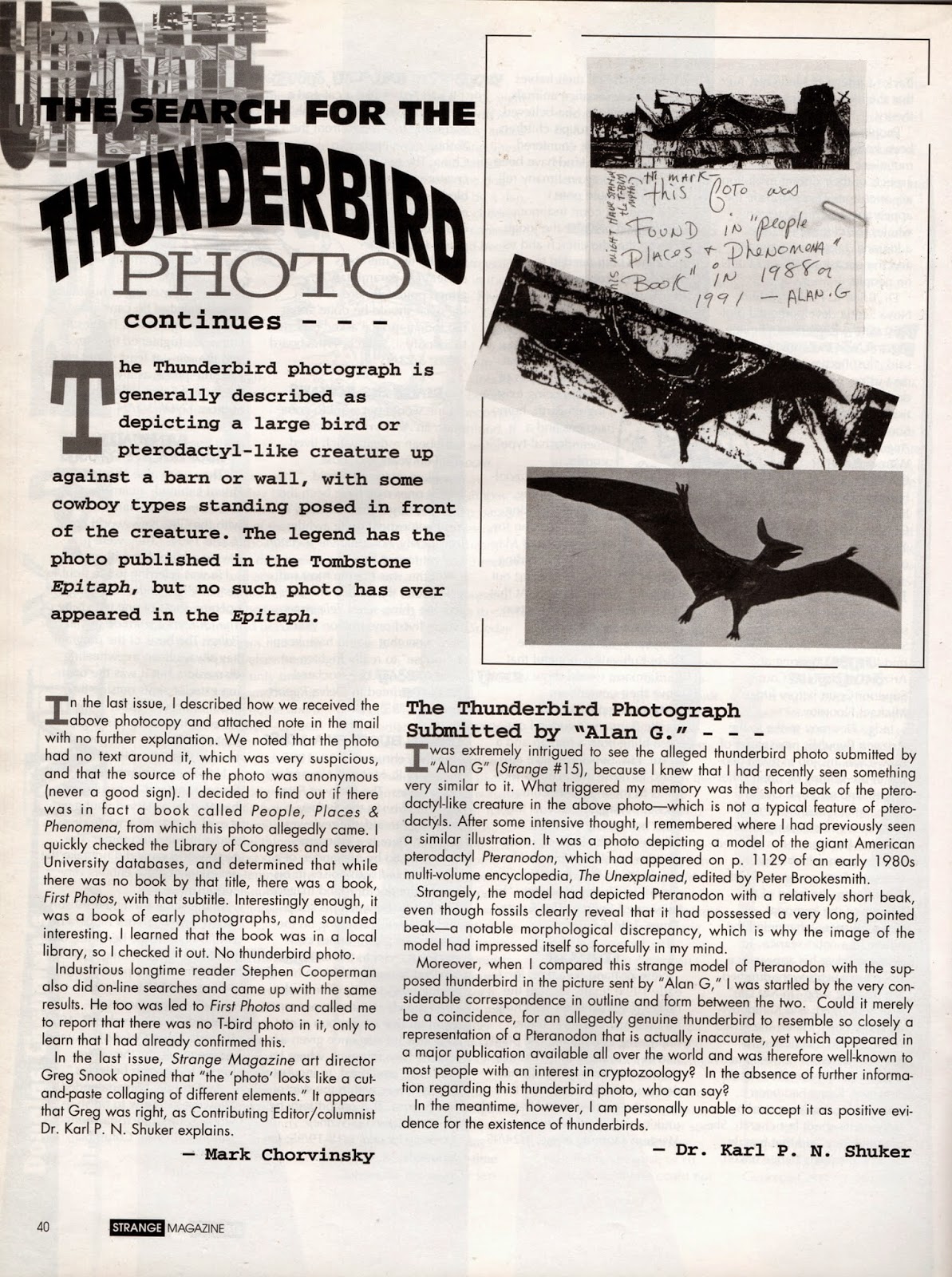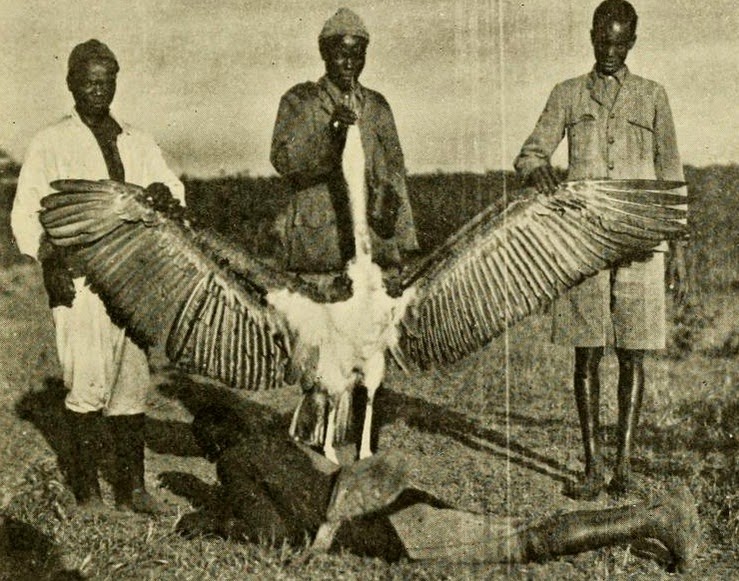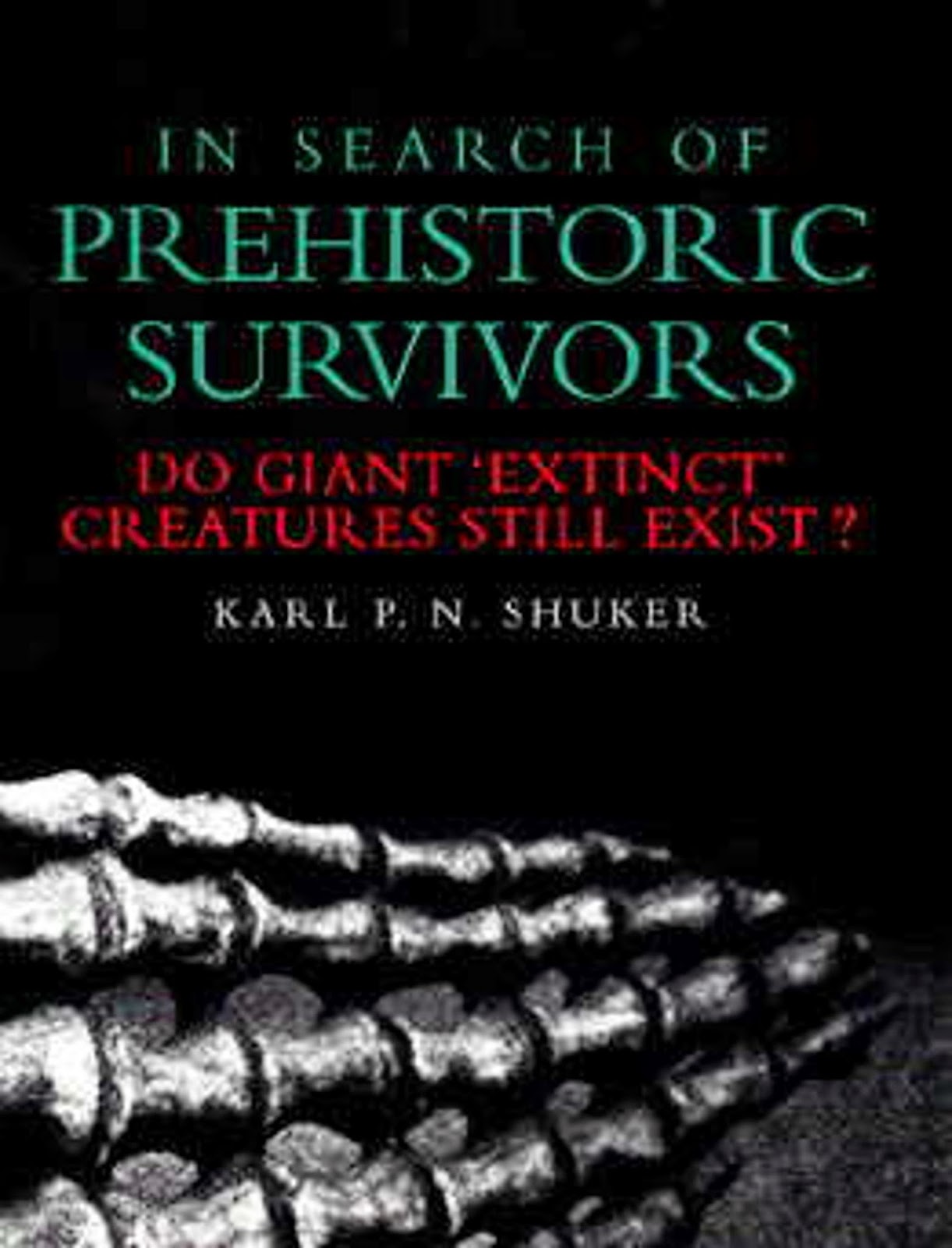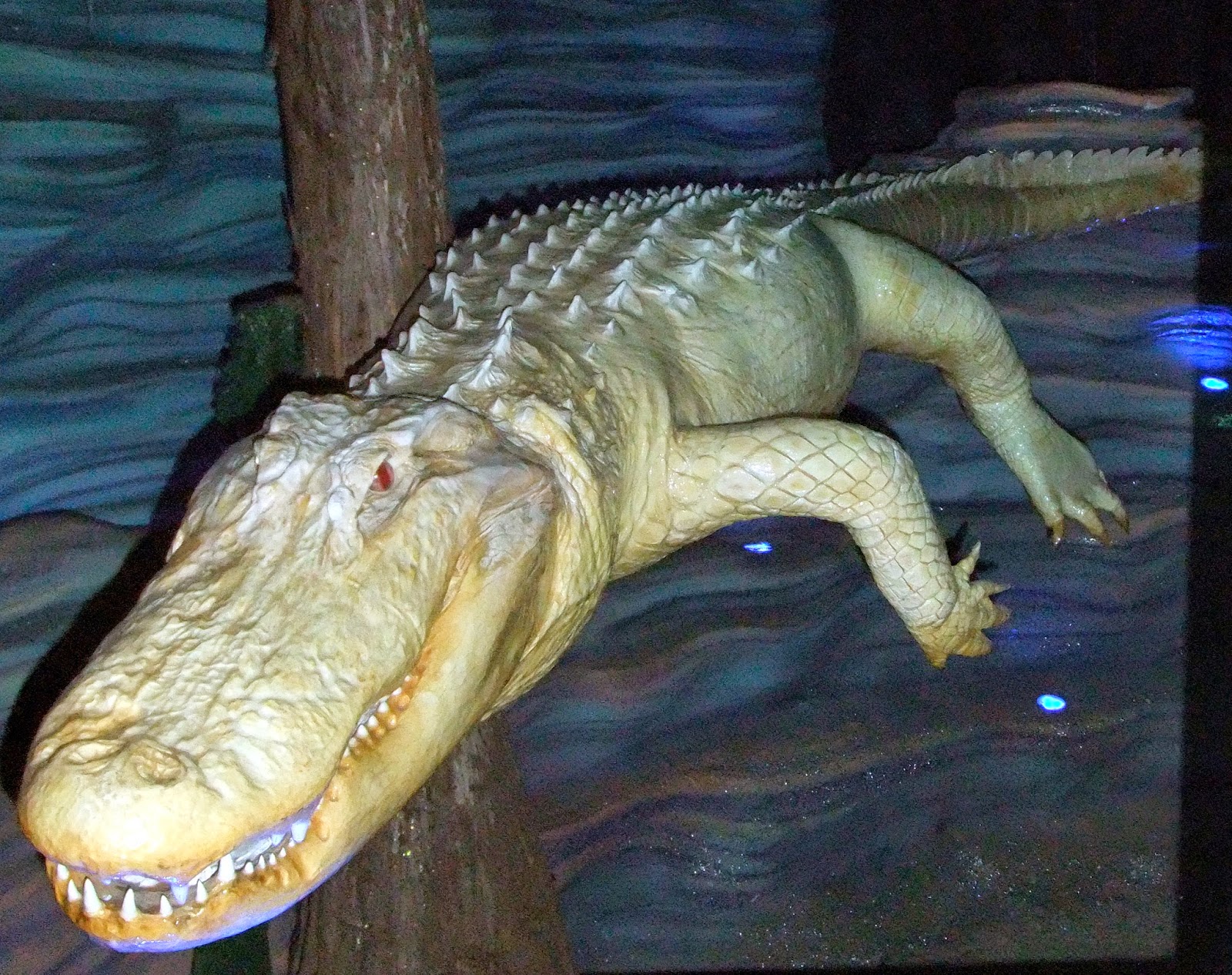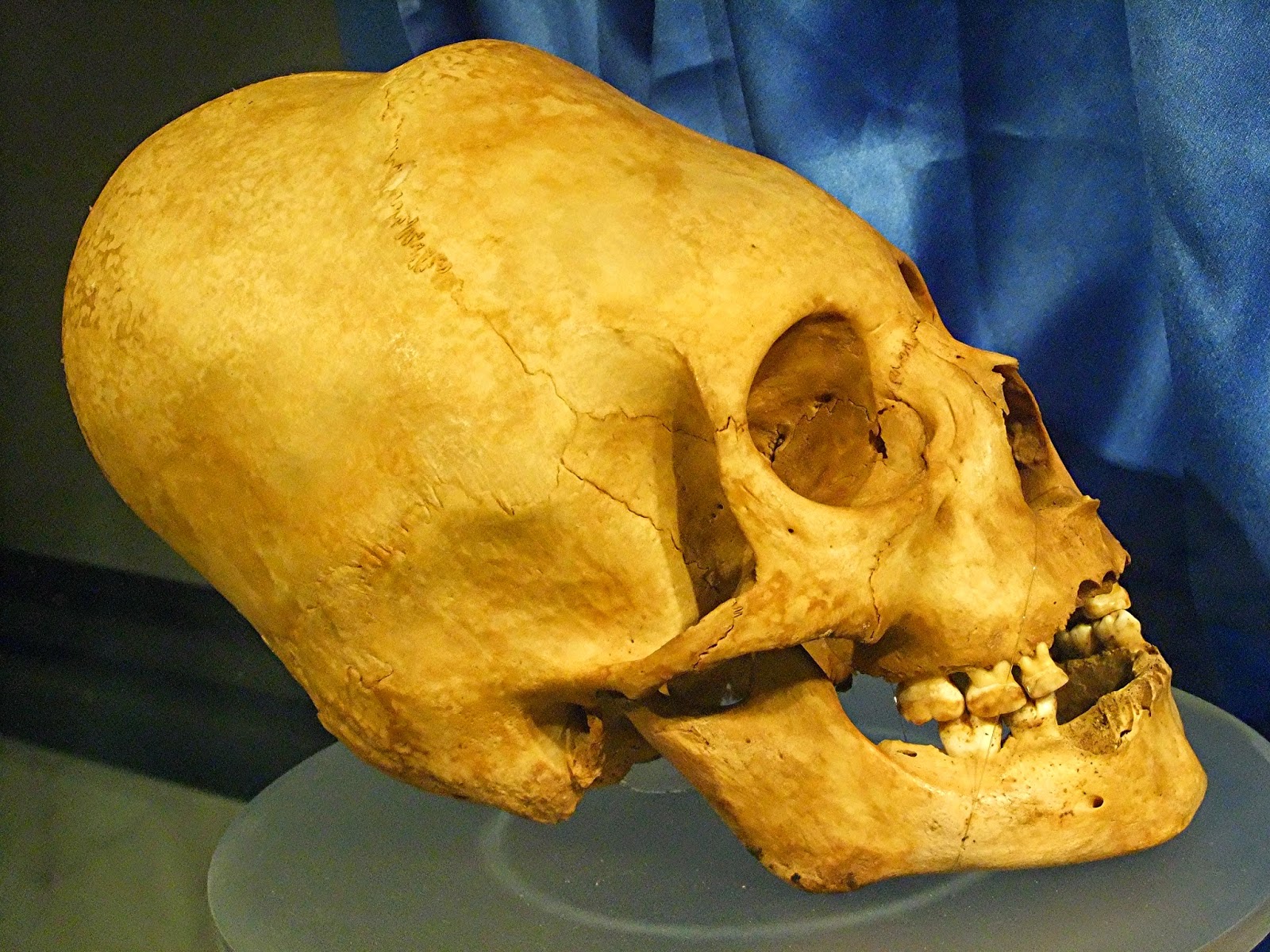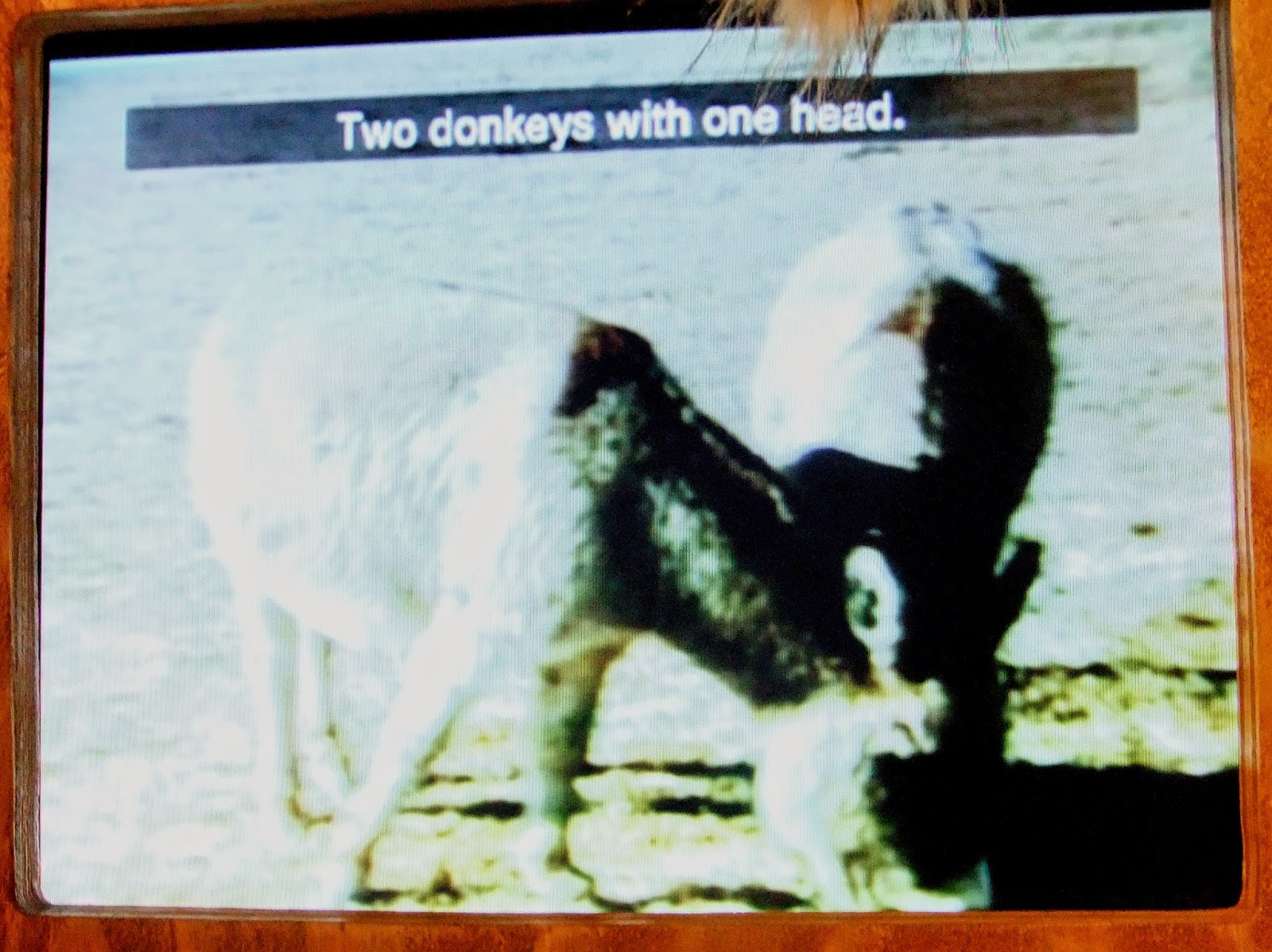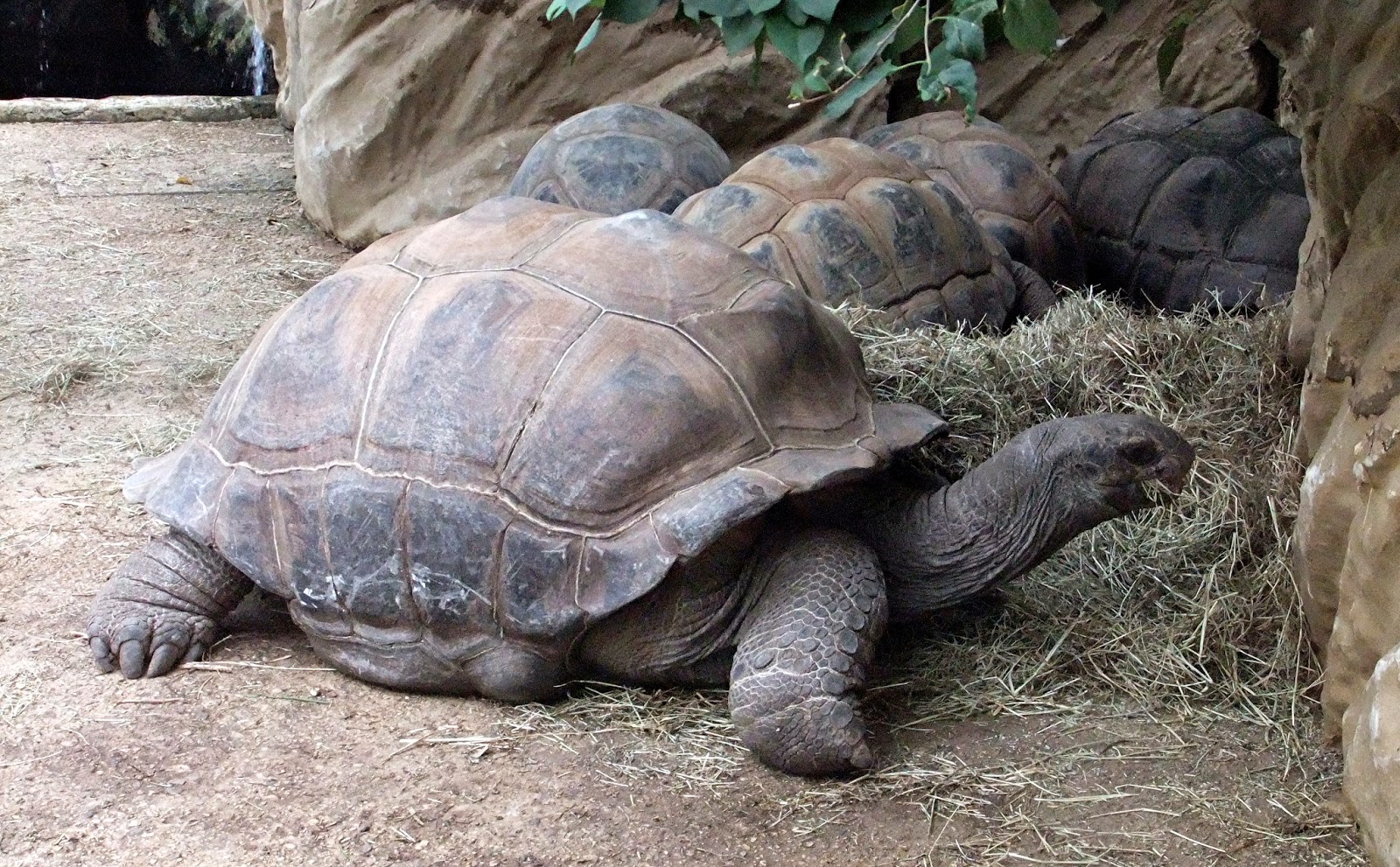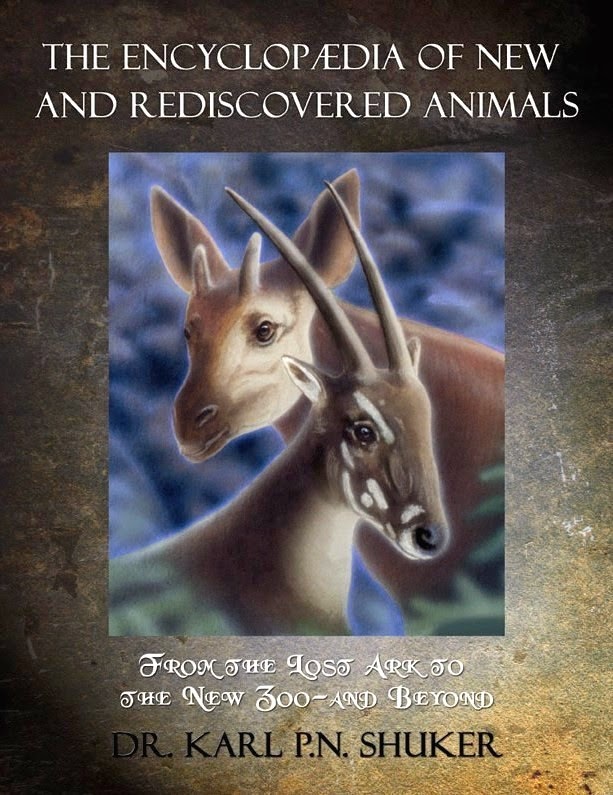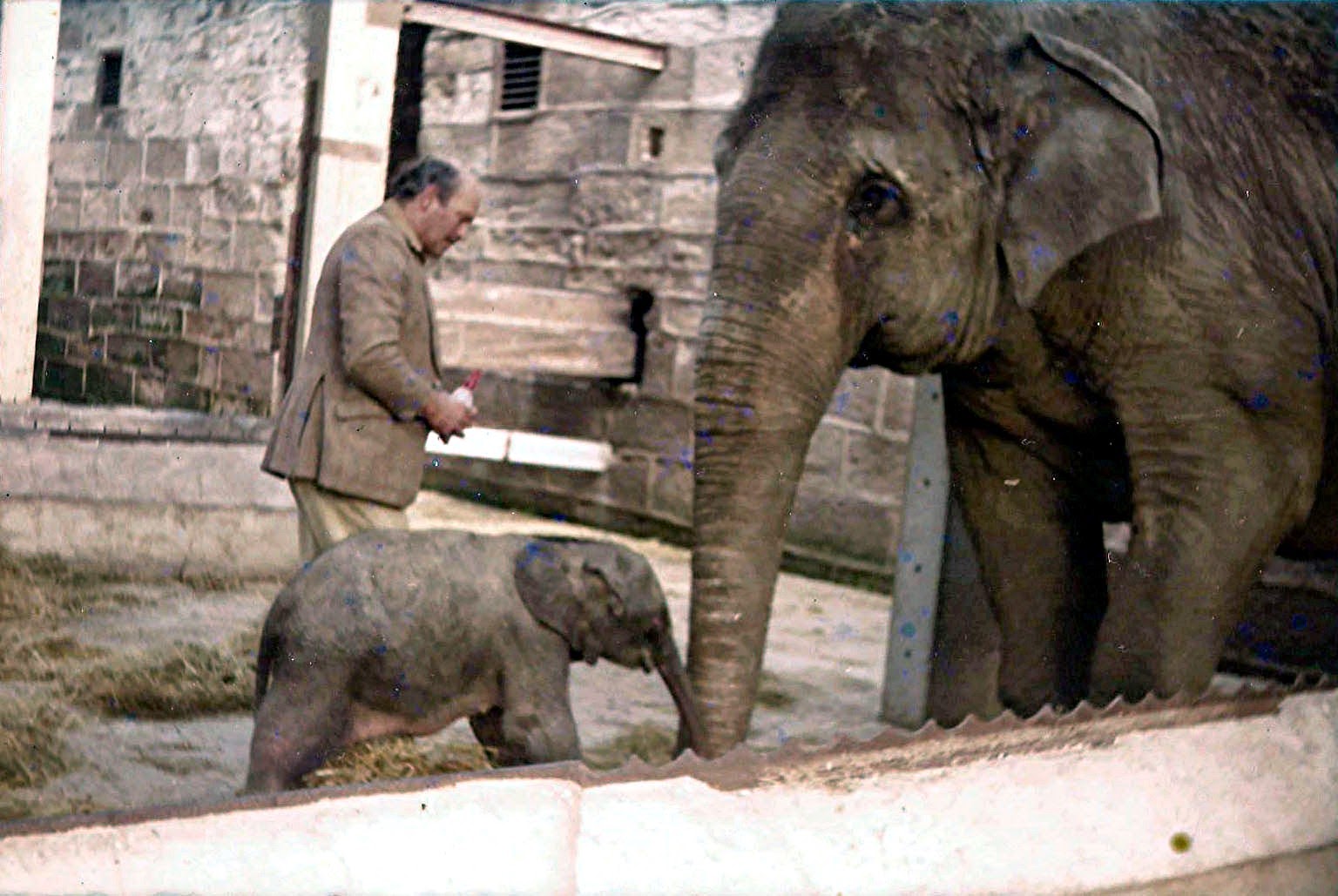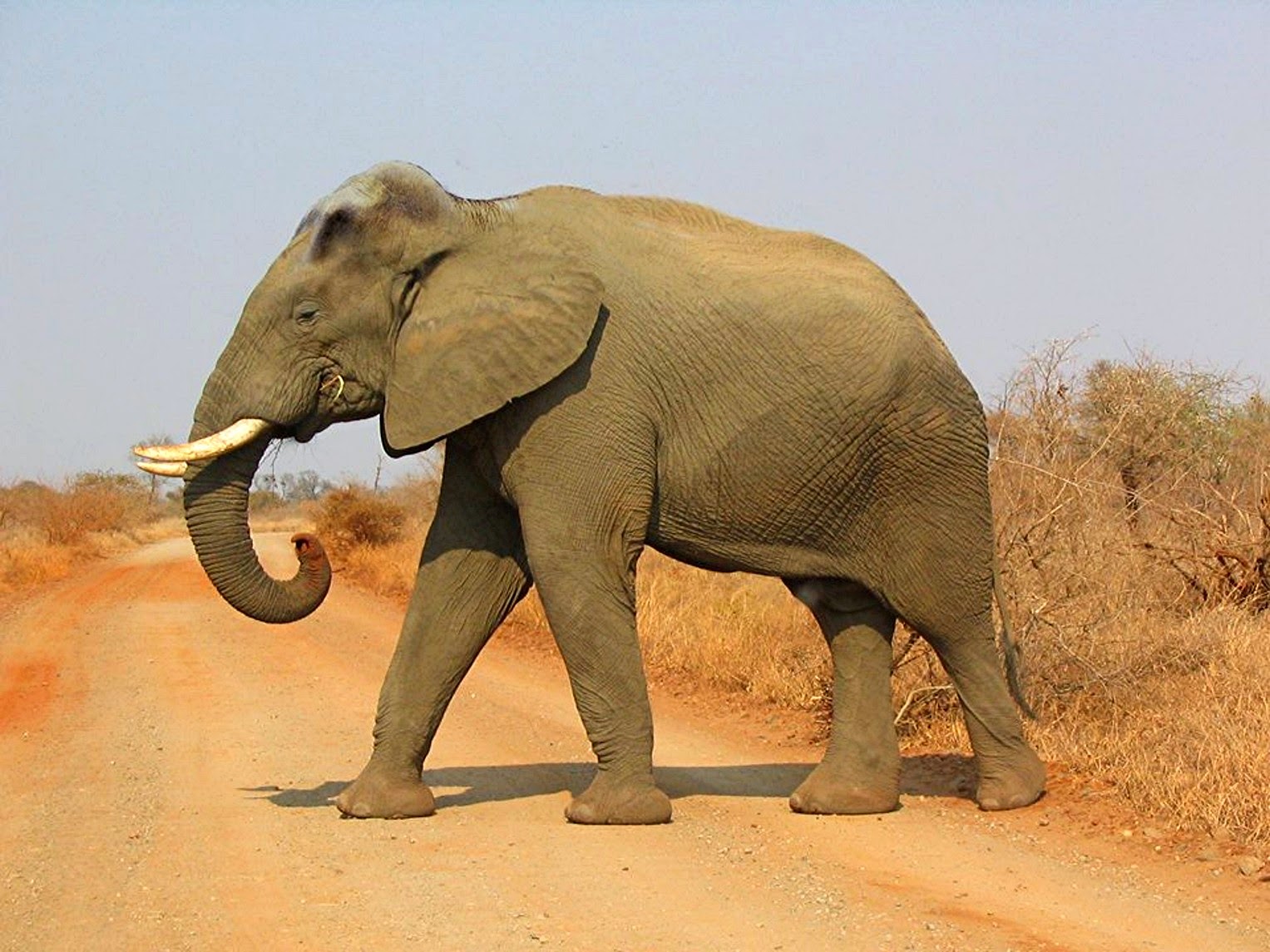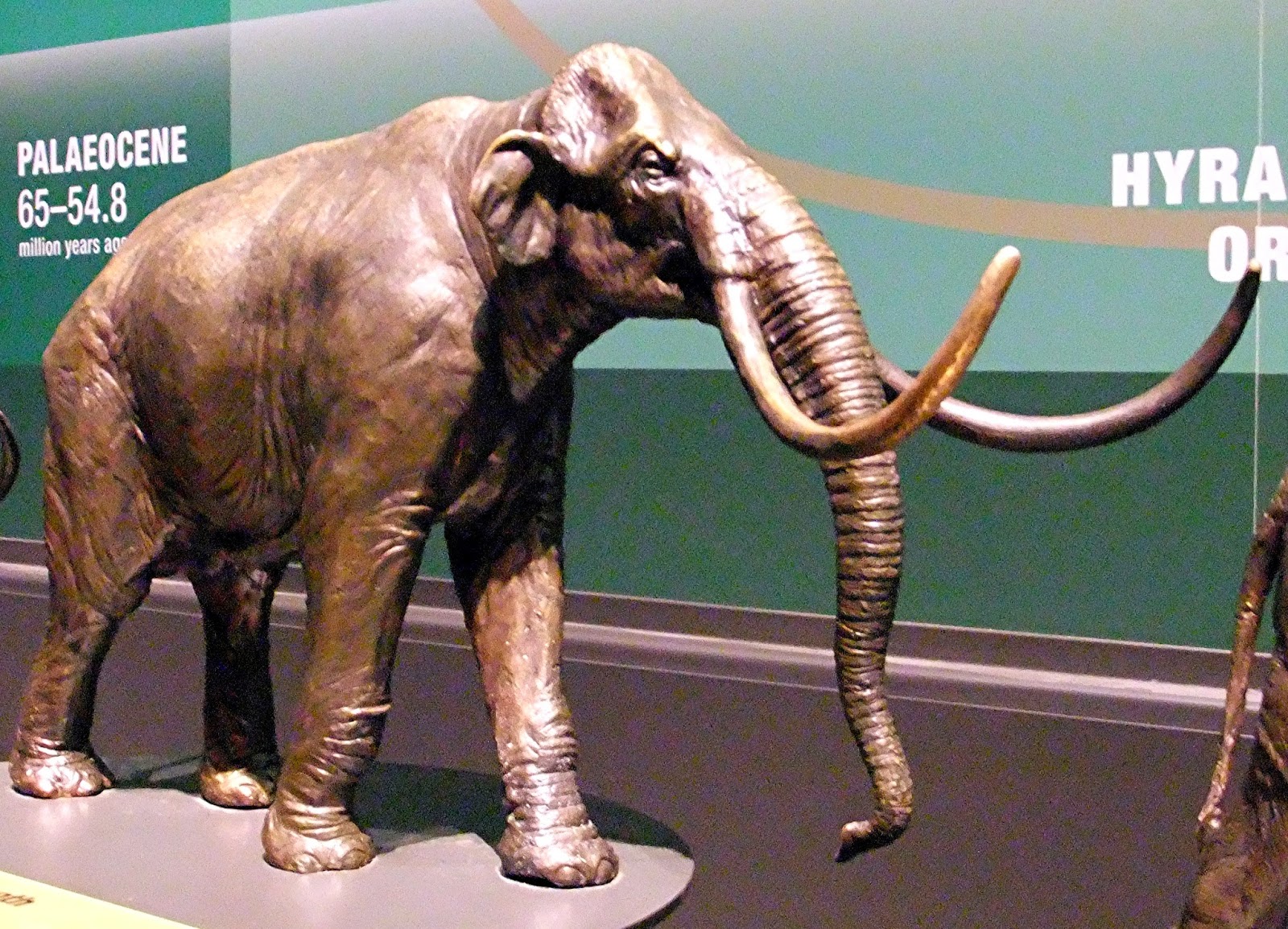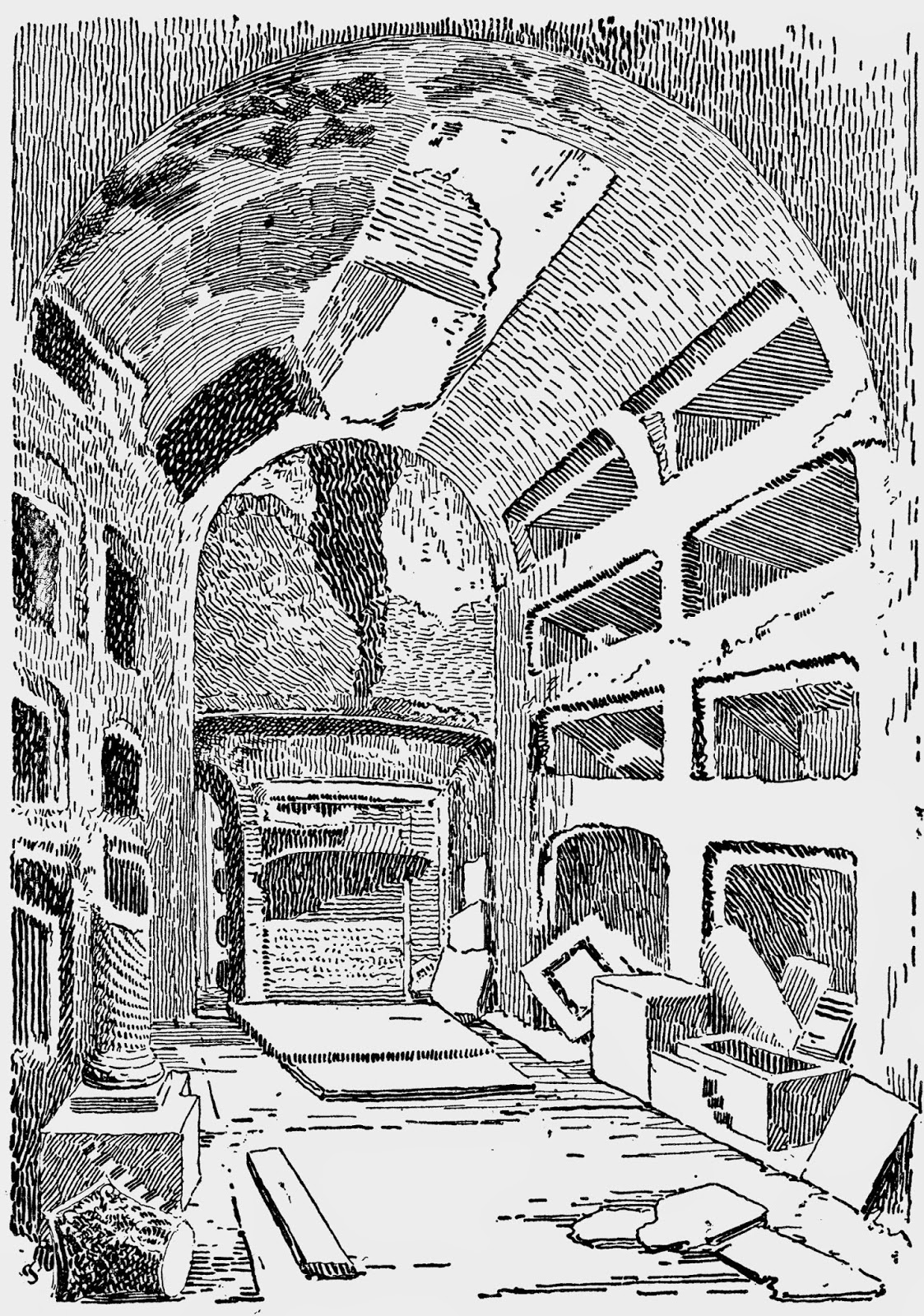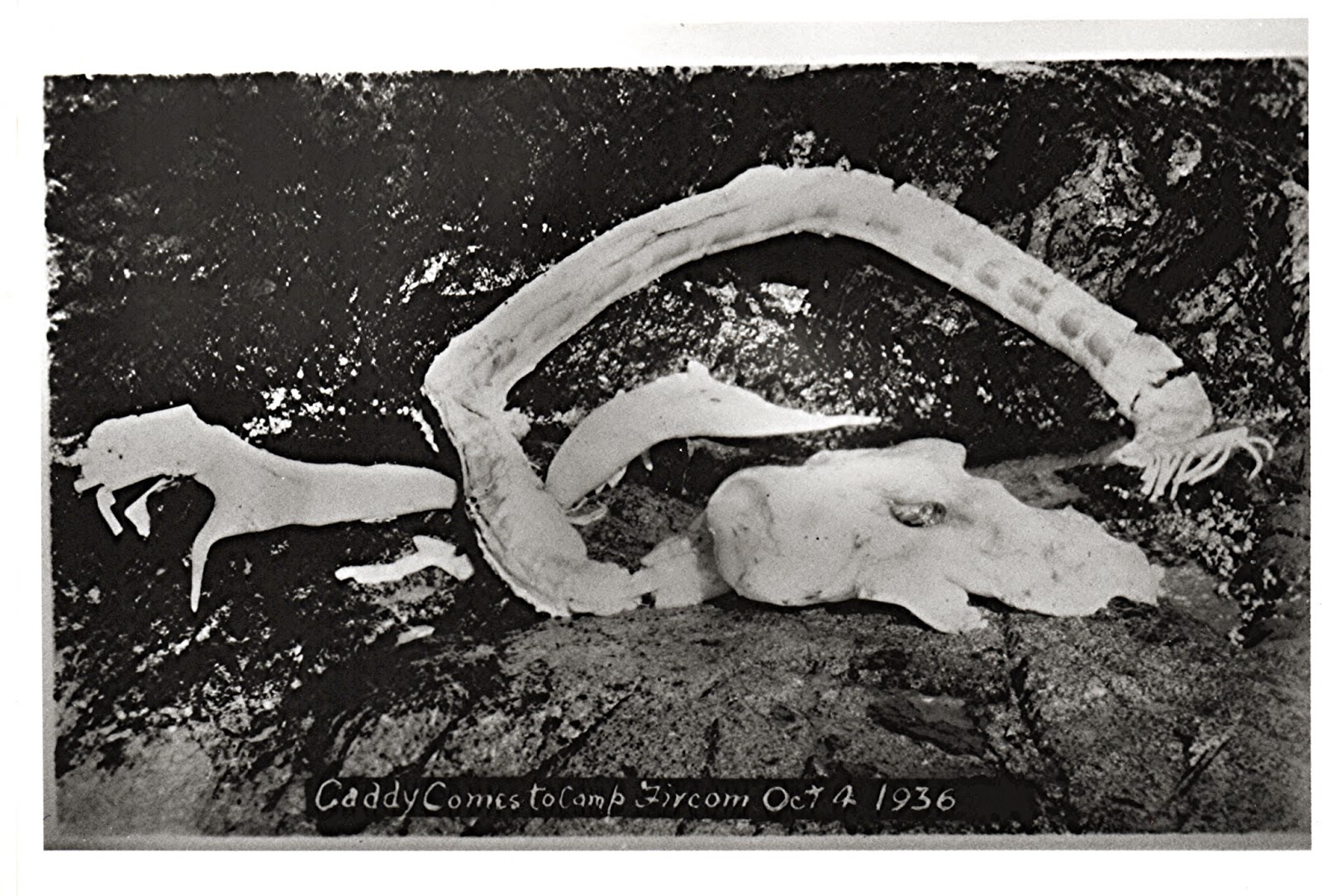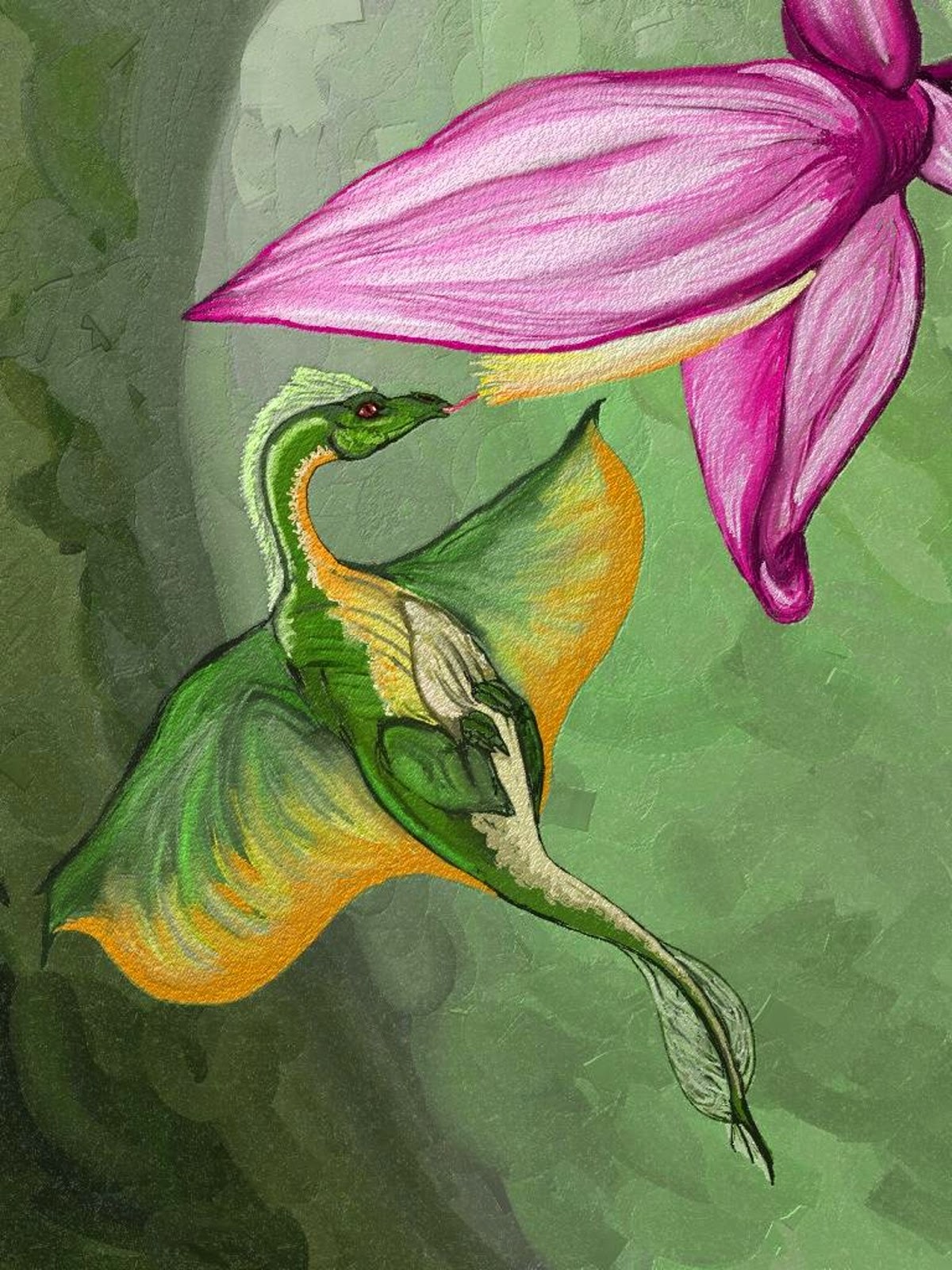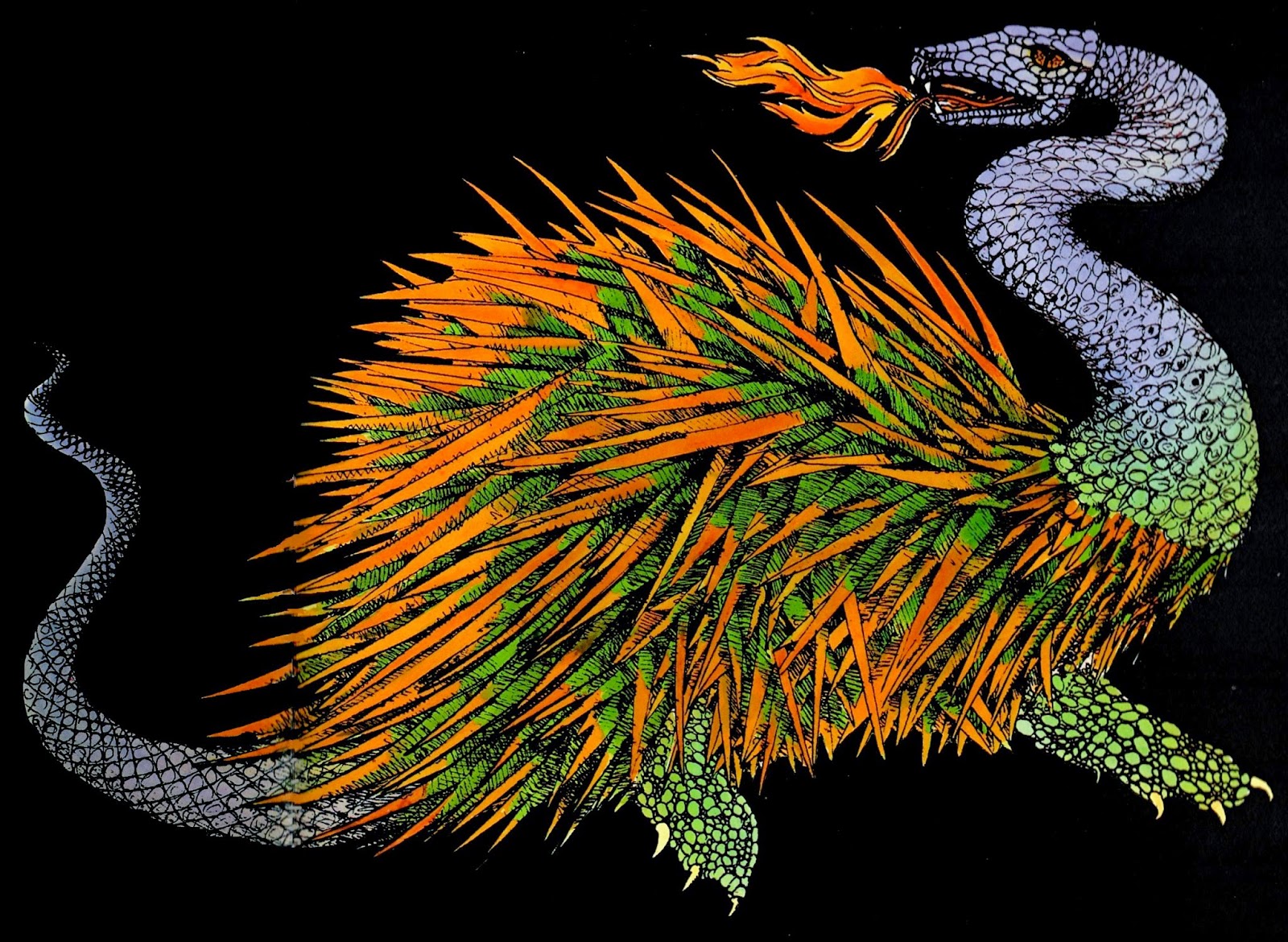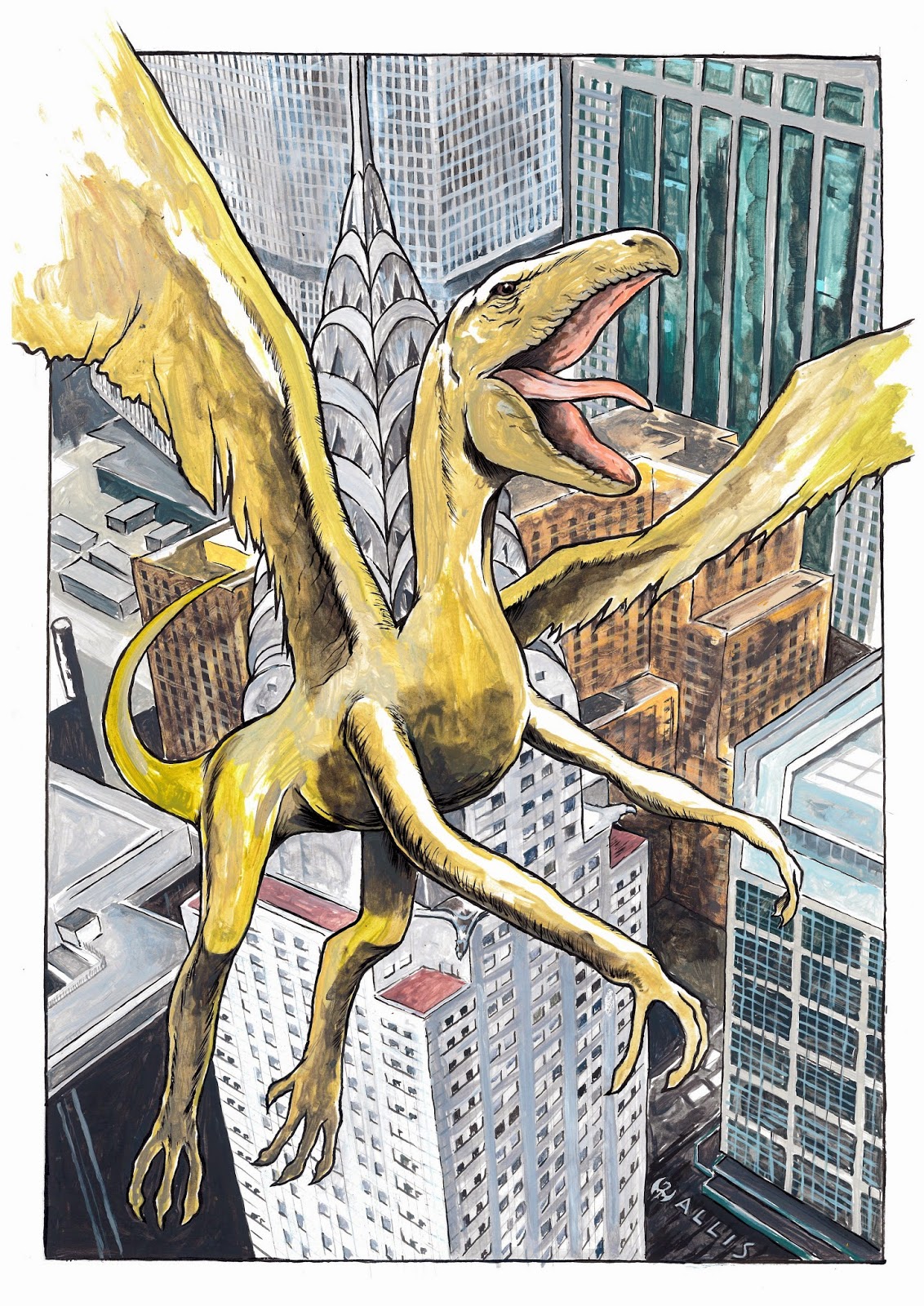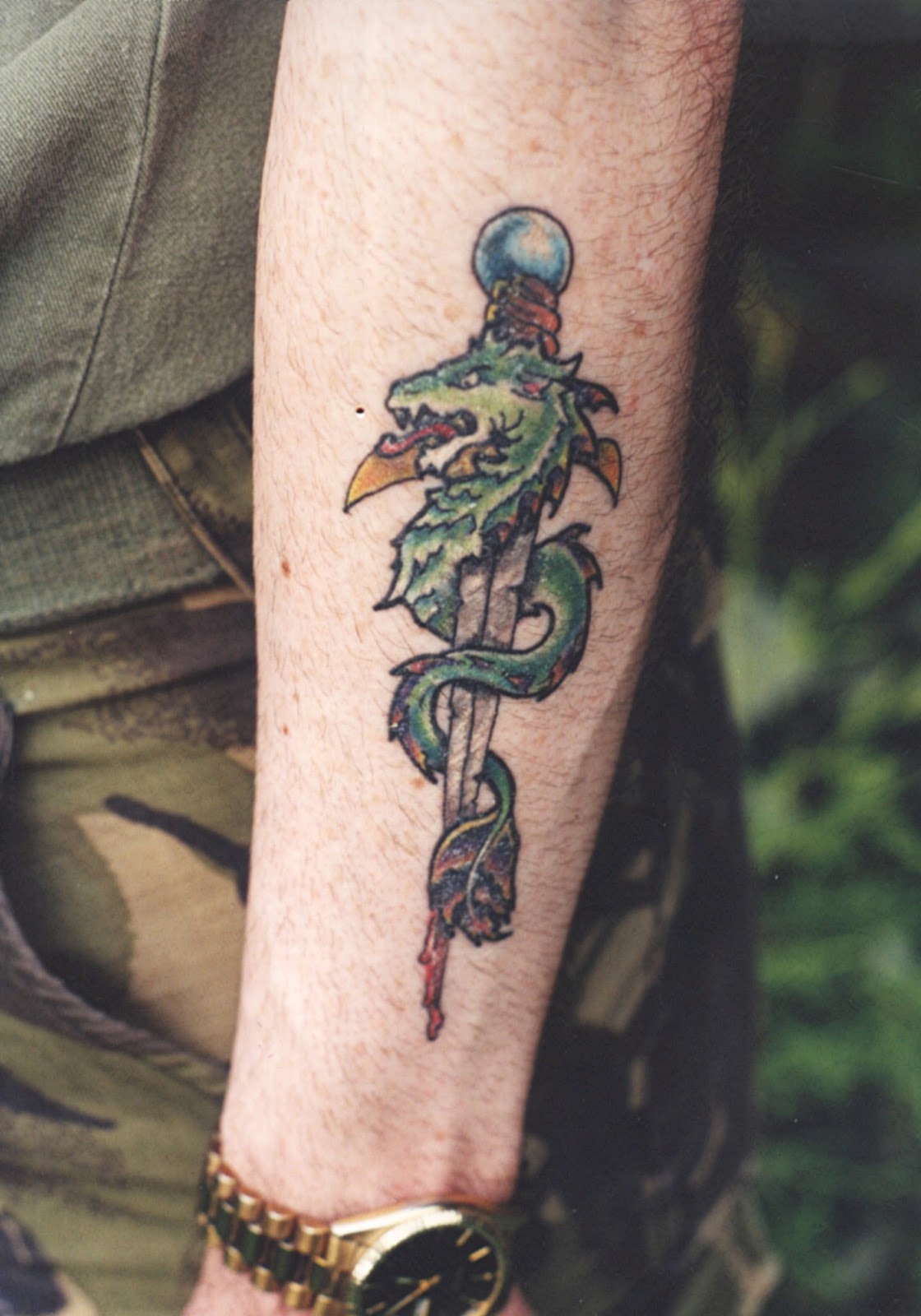Official movie poster from the 1982 film Q – The Winged Serpent (© Larry Cohen (dir.)/United Film Distribution Company)
As the author of two books on dragons – Dragons: A Natural History(1995) and Dragons in Zoology, Cryptozoology, and Culture (2013) – I've researched an extremely wide range of these reptilian monsters in my time. So here, excerpted from my two books, and in no particular order, are ten of my all-time favourite dragons and dragon-related subjects – a very diverse selection drawn from mythology, literature, and the media. And what more fitting, timely example with which to begin it than the Lambton worm, whose story supposedly began one Easter, long long ago…
THE LAMBTON WORM – AN ACCURSED BRITISH SERPENT DRAGON
The term 'dragon' is widely believed to derive from the Greek word 'derkein', which translates as 'sharp-eyed', and seems to have been applied originally to a snake. When transliterated into Latin, it became 'draco'– 'giant snake'. This is particularly apt because, morphologically, the basal dragon form was the serpent dragon. As its name suggests, in overall appearance this form, which was both limbless and wingless, resembled a huge snake or even a gigantic worm. Indeed, some serpent dragons were actually referred to as worms, also known as wyrms (an Old English term for snakes), wurms, or orms – all of which are terms derived from the Norse 'ormr' or 'ormer', translating as 'dragon'. Unlike these humble, harmless beasts, however, and betraying its draconian status, a serpent dragon had a head that was horned, long-jawed, and very often bearded.
Many of Britain's dragons were of the worm variety, which was also recorded widely across northwestern Europe. Dragon-headed and generally of immense length, worms not only lacked limbs and wings but also one of the characteristics most readily linked with dragons – the ability to breathe fire. However, this did not make them any less deadly – far from it. Instead of fire, worms emitted noxious clouds of poisonous gas that could lay waste to great swathes of countryside and decimate entire villages, or possessed a venomous bite of lethal propensity.
Worms could also kill by wrapping their huge coils around any potential antagonist, rather like real-life pythons and boas. They could even survive being chopped into several pieces, because the pieces swiftly reconnected with one another unless they were buried separately or burnt immediately.
Perhaps the most famous British worm is the Lambton worm, which reputedly grew from a small black leech-like beast caught in the River Wear, CountyDurham, on Easter Sunday 1420 by John Lambton - the youthful, impious heir to LambtonCastle, who had gone fishing while everyone else from the town of Washington close by attended church. Cursed for his blasphemy, Lambton sought redemption by journeying to the Holy Land on a pilgrimage after hurling his loathsome-looking catch into a nearby well. When he returned several years later, however, he was horrified to discover that the creature had grown into a monstrous worm that had been terrorising Washington's inhabitants by devouring their lifestock, wilting their crops with its toxic breath, and killing anyone who had dared to challenge it. Even chopping it in two had been futile – the two halves simply rejoined straight away.
Happily, however, Lambton was able to rid the town of this accursed creature. After seeking the advice of a wise witch, he commissioned the creation of an extraordinary suit of armour, bristling with long sharp spines. He then enticed the worm into the River Wear, and as soon as it attempted to crush him in its mighty coils, the spines on his armour sliced it into several segments, which were immediately carried away and dispersed by the river's fast-flowing current, so that they were unable to reconnect. Thus ended the Lambton worm's reign of terror.
The Lambton worm, from an 1894 book of fairy tales (public domain)
This famous myth has been preserved through generations of retellings in northern England, but how it originated remains a mystery - unless, perhaps, the worm was in reality some less dramatic wild beast (or even an imaginative personification of a local now-forgotten natural disaster) that John Lambton had successfully combated? Having said that, however, eminent English historian and antiquarian Robert Surtees (1779-1834) claimed that during the early 19th Century he had seen at the village of Lambton (aka Old Lambton) in Washington a piece of preserved skin said to be from the Lambton worm, and which resembled the hide of a bull.
A similar ploy to Lambton's wearing of a spiny suit of armour was utilised in the killing of another British worm. This was when, during the 1300s, Sir William Wyvill wore a suit of armour covered in razor-sharp blades when battling an enormous worm at Slingsby in North Yorkshire. But this time, instead of a river dispersing the worm's body segments, the knight's faithful dog carried each segment away and buried it in a different location. Despite its resourcefulness, however, it could not save its master, or itself, from the worm's baneful effects. When it licked its grateful master's face, drops of the worm's deadly blood upon its jaws transferred inside its mouth and also onto the knight's face, and both man and dog died shortly afterwards.
THE HYDRA OF HERACLES AND THE HOAXED HYDRA OF HAMBURG
One of the most unusual, and deadly, dragons, of classical mythology was the Lernean hydra - whose slaying constituted one of the twelve great labours of the Greek hero Heracles (Hercules in Roman mythology).
Although this monster is usually depicted as wingless and only two-legged, it was more than ably compensated by virtue of its numerous heads (generally given as nine, but sometimes only seven, or as many as thirteen), each borne upon a separate neck. And each time that a head was cut off, two new ones grew in its stead, until Heracles successfully countered this by burning each neck as soon as its head was lopped off.
Produced in 1921, John Singer Sargent's sumptuous rendition of Heracles battling a mighty 13-headed hydra (public domain)
Even more marvellous in its own deceiving manner was the hoaxed hydra that was removed from a church in Prague in 1648 and subsequently owned by Johann Anderson, the Burgomaster of Hamburg. So spectacular was this preserved wonder that Anderson even rejected an offer of 30,000 thalers for it from Frederick IV, king of Denmark. In basic form, the hydra resembled a standard lindorm, sporting a long tail and sturdy scaled body but only two limbs and no wings. Instead of just a single neck and head, however, it boasted no less than seven of each, with all of the necks emerging from a common base.
Yet despite the hydra's extraordinary appearance, its perceived monetary value eventually decreased, until by 1735 negotiations had begun for its sale at a mere 2000 thalers. Before these could be completed, however, eminent naturalist Carl Linné (who subsequently Latinised his name to Linnaeus) examined this celebrated specimen, and exposed it as a fraud. The heads, jaws, and feet were those of weasels, and a series of snake skins had been pasted all over its body.
Depiction of the hoaxed hydra of Hamburgin Albertus Seba's Cabinet of Natural Curiosities(Vol. 1), 1734 (public domain)
Linnaeus speculated, however, that this exhibit had probably been created not by wily vendors to sell as a supposedly genuine hydra to some unwary buyer for an eye-watering sum of money, but rather by monks as a representation of the seven-headed dragon of the Apocalypse with which to chastise and terrify disbelievers. Yet whatever the reason, the result was outstanding, but even so, once this hoaxed hydra's true nature had been revealed by Linnaeus, the deal for its sale fell through, and shortly afterwards the hydra itself vanished – never to be seen again.
DRAGONS ON CHILDREN'S TELEVISION
There have been many notable small-screen dragons, but thanks to the charmed tenacity of nostalgia, perhaps those that we most readily recall are ones that featured in shows from our childhood.
One of the legendary names in British children's TV is Oliver Postgate (1925-2008), who created and wrote some of the most beloved shows of all time in this special genre of television – 'Bagpuss', 'Clangers', 'Noggin the Nog', 'Ivor the Engine', and 'Pogles' Wood', among others. They were all made by his company Smallfilms (founded with Peter Firman), and screened by the BBC. Some of these featured delightful dragons, remaining cherished childhood memories for generations.
Originally screened from 1969 to 1972 but repeated numerous times thereafter, 'Clangers' was a stop-motion show of 27 10-minute episodes. They featured a family of small whistling aliens, the clangers, with long snouts and knitted waistcoats. These share a tiny hollow planet with a host of exotic fauna and flora, such as the iron chicken, the froglets, the musical trees, and, most notable of all, the soup dragon. It is she who obtains from the planet's volcanic soup wells the delicious blue string pudding and green soup that the clangers adore. It was this character (and her baby dragon) who inspired the name of Scottish alternative rock band The Soup Dragons.
A delightful personal interpretation by fantasy artist Anthony Wallis of the soup dragon from 'Clangers' (© Anthony Wallis)
Consisting of 27 10-minute episodes (six in colour) of limited stop-motion photography and first screened in 1959, 'Noggin the Nog' was a Norse-type saga about a tribe of Northmen, the Nogs, led by King Noggin, and featuring an extensive cast of characters. These include Noggin's villainous uncle Nogbad the Bad, inventor Olaf the Lofty, a giant green bird called Graculus, Arup the great walrus, and an amiable ice dragon known as Groliffe (not to mention a flying machine and a fire machine!). Befriended by Noggin, Groliffe subsequently comes to his aid when he and his friends are in trouble.
Spanning 1959 to 1977 and consisting of 32 10-minute black-and-white episodes and 40 5-minute colour episodes of stop-motion photography, 'Ivor the Engine' was famously set in "the top left-hand corner of Wales". It features a green locomotive called Ivor, his driver (Edwin) Jones the Steam, plus several supporting characters. Notable among them is Idris, a small red heraldic dragon based upon the emblem of Wales, who lives with his wife and two dragon children in an extinct volcano called Smoke Hill, and sings in the local choir.
A dragon called Dennis who combined the best of both geographical types appeared in 'James the Cat'– a cartoon series of 52 5-minute episodes screened by the BBC from 1984 to 1992. One of many animal friends of the show's title character, Dennis is a pink Chinese dragon but breathes fire and speaks with a Welsh accent!
A happiness-bringing luck dragon long before Falkor debuted in the novel and film versions of The Neverending Story, Chorlton was the friendly but somewhat slow-witted star of an enchanting British series entitled 'Chorlton and the Wheelies', originally screened on ITV from 1976 to 1979. In the very first of its 40 stop-motion animated episodes, created by the company Cosgrove Hall, Chorlton hatches from an egg and then arrives in Wheelie World. This is a strange land populated mostly by Wheelies – creatures that have wheels instead of legs, but which are burdened with sadness conjured up by a wicked witch called Fenella...until Chorlton's happiness soon dispels the gloom. In subsequent episodes, Fenella puts into practice all manner of evil schemes to rid Wheelie World of Chorlton, or cause problems for him, but he and his Wheelie friends invariably manage to foil them.
One of the most popular series from the golden age of children's TV in the USA was 'H.R. Pufnstuf', a live-action show featuring life-sized puppets whose 17 25-minute episodes were first screened from September 1969 to September 1971. H.R. Pufnstuf is not only a dragon but also a mayor – of a magical isle called LivingIsland. Here everything is alive, even the houses, and is where an 11-year-old boy called Jimmy (played by Jack Wilde, the artful dodger in the 1968 film musical Oliver!) and his talking flute Freddy are taken to in a mysterious boat. The series' basic scenario is similar to that of 'Chorlton and the Wheelies', in that the bane of Living Island is a troublesome witch, called Witchiepoo here, but her evil plans are always thwarted by the dragon, Jimmy, and their many friends there.
Originally aired in Canada and the USA from 1993 to 1997, and running to five seasons, collectively containing 65 30-minute episodes, 'The Adventures of Dudley the Dragon' was a live-action show in which a full-costumed actor played Dudley. Befriended by two children after waking up from centuries of hibernation, Dudley finds out what the modern-day world is like, with particular emphasis upon environmental issues.
Other popular children's TV shows featuring dragons included 'Wacky Races', 'My Little Pony', 'The Smurfs', 'Pocket Dragon Adventures', 'Eureeka's Castle', 'Digimon', and, for older children and teenagers, 'Power Rangers', 'Dungeons and Dragons', and several Manga series. Moreover, countless TV cartoons have featured dragons as one-off foes or comic relief characters.
Not all dragons are huge and frightening, some are very small and very sweet, especially in children's media (© Thomas Finley)
THE PELUDA – SHAGGY SURVIVOR OF NOAH'S GREAT FLOOD
Even among the unparalleled diversity of dragon forms, the following example from traditional French folklore was truly unique and unforgettable.
There on the bank of the river Huisne, at La Fert‚-Bernard in medieval France, something was definitely moving. Suddenly, what appeared at first to be the head and sinuous body of a huge viper-like snake emerged from a spherical mass of bright green vegetation, and reared upwards above it. Moments later, however, the vegetation itself began to move, quivering as if it were a living creature - which was only to be expected, for that was precisely what it was. What had seemed to be nothing more than a cluster of riverside foliage was in reality the round body of a huge animal with shaggy green fur - and what had appeared to be a giant serpent was now exposed as this extraordinary animal's head and neck!
It was the peluda - a terrifying amphibious neo-dragon also known as the shaggy beast, which had been spawned in early biblical days and was refused entry onto Noah's Ark, yet had nonetheless survived the Great Flood, and was now terrorising the environs of La Fert‚-Bernard. Its dense green pelage partially hid four horny, turtle-like feet, and bristled with countless numbers of spine-like quills - which contained potent stinging venom, and could be jettisoned like poisonous javelins into anything unwary enough to approach too closely. This monstrous beast could also kill a person with a mighty thwack of its immensely powerful tail - and when it was sufficiently angered, a single blast of flame spewed forth from its coiled throat could incinerate fields for miles around.
The peluda or shaggy beast (© Helena Zakrzewska-Rucinska/Dr Karl Shuker/MarshallEditions, from my book Dragons: A Natural History)
For a time, the peluda had contented itself with raiding farms and stables each night in search of horses and other livestock as prey - robbing the farmers of their livelihood, but rarely of their lives, unless they were foolish enough to challenge its depredations.
Occasionally, massed attacks on the beast by brave companies drawn from the local populace had succeeded in driving it into the Huisne - but the peluda was of such colossal size that whenever it submerged itself underwater, the river immediately overflowed its banks, and much of the district bordering on either side was completely flooded, thereby causing as much devastation to the farmers as the monster's own onslaughts.
More recently, however, the situation had become even worse, for the peluda had lately expanded its dietary scope - adding children and damsels to its murderous menu. Several of the village's fairest maidens had been devoured, and only this morning yet another had been ambushed and carried away - but this time she had not been alone. Her valiant fianc‚ had been nearby, and had witnessed the terrible deed. Now he swore vengeance against her antediluvian attacker, and he took up his trusty sword to do battle.
Protected from the peluda's deadly arsenal of self-propelling quills by his suit of mail, and additionally armed with knowledge gained from the village's wisest seer, the bold youth strode forth and aimed a terrible blow with his sword - but not at the monster's undulating neck, and not even at the heaving belly concealed beneath its shaggy fur. Instead, he hacked down at its writhing tail, and severed it in two with a single slash of his keen blade. Instantly, the mighty peluda keeled over and died - for its tail was the only portion of its body vulnerable to mortal injury.
Back in La Fert‚-Bernard there was great rejoicing, and the remains of the peluda were embalmed. As for its conqueror, he was acclaimed forever more as a hero, and rightly so - after all, he had achieved a feat that not even the Great Flood had been able to accomplish!Another artistic representation of the peluda (© Tim Morris)
THE PYRALLIS – A VERITABLE FIRE-FLY DRAGON!
The smallest of all dragons and entirely at home in the midst of a blazing fire was a tiny beast termed the pyrallis. Also called the pyragones or pyrausta, this remarkable animal was no bigger than a large fly, and resembled a four-legged insect, with burnished bronze body and golden filigree wings - but its head was that of a dragon.
A pyrallis, as depicted by Una Woodroffe in her spectacular illustrated book Inventorum Natura (© Una Woodroffe/Paper Tiger)
It was associated exclusively with the copper smelting forges and foundries of Cyprus, in which swarms would dance and cavort like incandescent will-o'-the-wisps. Yet if one of these animate sparks should fly out of the flames, even for the briefest of instants, it would die at once - because the pyrallis drew not merely its sustenance but its very life-force from the furnaces' burning heat and raging vitality. Truly a beast of the fire and the flame!
DRAGONS OF MIDDLE-EARTH
Considered by many readers and literary critics alike as the most significant and influential modern-day works of fantasy fiction ever published, The Hobbit (1937), The Lord of the Rings trilogy (1954, 1954, 1955), The Silmarillion (1977), and J.R.R. Tolkien's other novels contain a number of important dragons.
It has often been supposed that his works are Christian allegories or are at least derived from Christian themes, and therefore comparable in terms of inspiration to the Narnia novels of C.S. Lewis. In reality, however, Tolkien's principal muse was the Elder Edda– a collection of Old Norse myths and legends preserved principally within the Codex Regius, which is a medieval Icelandic manuscript, written in the 13th Century. Yet the myths and legends themselves are far older, and include all of the famous Norse ones known today.
Many familiar character names in Tolkien's books, for example, including Gandalf and various of the dwarves featuring in The Hobbit, were borrowed directly by him from the Elder Edda. So too were other entities and themes, one of which that attracted his particular attention being the slaying by the hero Siegfried of the evil dwarf Fafnir, who had transformed himself into a typical Nordic dragon in order to protect his ill-gotten treasure hoard. This dragon became the basic template for the various examples featuring in Tolkien's novels.
Siegfried slaying a dragon-transformed Fafnir in this stunning artwork by Arthur Rackham (public domain)
Yet although Tolkien's dragons were of traditional Nordic form and treasure-hoarding behaviour, they were much more intelligent than their antecedents in the Old Norse myths and legends, and they could speak too.
Created by the dark lord Morgoth, there were three types – the great worms, the winged quadrupedal dragons, and the wingless quadrupedal dragons. Some could also breathe fire, enabling them to destroy the lands and cities of Middle-Earth's men, elves, and dwarves.
The first Middle-Earth dragon was Glaurung, a huge wingless fire-breather, which ultimately spawned numerous lesser dragons, and led them into battle on the side of Morgoth against the elves, but was finally slain by the hero-warrior Túrin.
The greatest Middle-Earth dragon of all, however, was Ancalagon the Black, the first winged fire-breather. His appearance alongside his spawn astonished the entire world, and initially gave victory to Morgoth's horde – until the great eagles and other warrior birds rallied against them, eventually achieving victory over their reptilian foes and breaking Morgoth's power forever. Ancalagon was slain by warrior Eärendil, and so enormous was this mighty dragon's body that when it plummeted down from the sky to earth, it decimated the three-peaked mountain Thangorodrim.
The last famous Middle-Earth dragon was Smaug, a huge golden-red winged monster almost entirely ensheathed in impermeable iron scales. Smaug destroyed with fire the human city of Dale and vanquished the dwarves from the Kingdom under the Mountain (of Erebor) in order to seize for himself their vast treasure of gold, jewels, and precious elvish metals stored there. This he jealously guarded for almost two centuries until disturbed by a party of dwarves seeking retribution, led by Thorin Oakenshield and also including among their number the hobbit Bilbo Baggins. It was Bilbo who discovered the one vulnerable region on Smaug's underside, which enabled a Northman archer named Bard the Bowman to slay Smaug after he had attacked the city of Esgaroth upon the LongLake.
More light-hearted and whimsical was another Tolkien dragon – Chrysophylax Dives. Pompously comical but still wily and villainous, he was finally captured and controlled by Farmer Giles of Ham in the book of the same title, using a mighty sword called Caudimordax (aka Tailbiter) that once belonged to a famous dragon-slayer.
A classic collection of Tolkien characters (© Richard Svensson)
THE LONGMA – SCALY DRAGON HORSE OF CHINA
One of the most unusual Oriental dragons was the longma or Chinese dragon horse. Traditionally deemed to be the vital spirit of Heaven and Earth, as indicated by its English name it was a curious yet surprisingly effective composite of two very different animals - sporting the body, legs, and hooves of a horse, but the head and scales of a dragon. Some, though not all, dragon horses also possessed a pair of wings, and could walk upon the surface of water without sinking.
Legend has it that eight winged dragon horses pulled the carriage of Emperor Mu of Jin (belonging to the Eastern Jin Dynasty) as he travelled around the world during the post-regency period of his reign (he reigned from 343 AD to 361 AD).
It was a yellow dragon horse that emerged long ago from the River Lo to reveal the eight trigrams of the famous divination system known as I Ching. Similarly, a dragon horse rose up out of the Yellow River and gave to the Emperor a circular diagram depicting the yin-yang.
Wooden carving of a dragon horse (© Dr Karl Shuker)
According to the Imperial Readings of the Taiping Era (aka Taiping Yulan) – a massive 1000-volume, multi-contributor Chinese encyclopaedia dating from the 10thCentury – a dragon horse spotted blue and red, covered in scales, sporting a thick mane, and giving voice to a mellifluous flute-like neigh once appeared in the year 741 AD, which was taken to be a good omen for the reigning emperor, Xuanzong of Tang. So fleet-footed that it could cover more than 280 miles without a pause, this wonderful beast had been born to a normal mare that had become pregnant after drinking water from a river in which a dragon had bathed.
During the 7thCentury, the Turkestan city of Kucha (now part of China) was visited by the travelling Chinese Buddhist monk and scholar Hsuan-Tsang, who noticed that a lake in front of one of this city's temples contained a number of water dragons. He was informed that they could change their form so as to mate with mares, and that the progeny of this curious crossbreeding were dragon horses, of a fierce, wild nature, and very difficult to tame.
Q – A VERY QUIRKY MOVIE DRAGON
One of the quirkiest yet most original dragon-based films ever released, and one of my own particular favourites, is director Larry Cohen's 'Q – The Winged Serpent' (1982). In it, a cult in New York City successfully resurrect Quetzalcoatl, the ancient flying serpent deity of Aztec mythology, who proceeds to swoop down from Manhattan's skies and skyscrapers to seize, dismember, and devour unwary city dwellers.
In appearance, however, this odd-looking entity is not serpentine at all, instead resembling a rather gangly, long-necked quadrupedal dragon with wings. Yet its smooth skin seems devoid of typical reptilian scales or spines, and it does not sport any feathers either – despite the original Quetzalcoatl being a plumed sky serpent.
Fantasy artist Anthony Wallis's superb personal interpretation of Q – the Winged Serpent (© Anthony Wallis)
Perhaps the epitome of the modern-day dragon film, however, is 'Reign of Fire' (2002), directed by Rob Bowman, and starring Christian Bale and Matthew McConaughey.
Set in the year 2020, this post-apocalyptic film reveals the devastation that has resulted after a sleeping dragon was inadvertently chanced upon and woken in an underground cave during some construction work on the London Underground shortly after the beginning of the new millennium. The dragon forced its way to the surface, swiftly multiplied, and within a dozen years humanity was virtually wiped out by a worldwide plague of flying fire-breathing dragons.
Finally, however, a brave survivor, Quinn Abercromby (played by Bale), and his isolated community hiding out in a Northumberland castle reluctantly join forces with a band of American fighters led by Denton Van Zan (McConaughey) to bring to a decisive end the dragons' literal reign of fire. Although the story's premise seemed decidedly far-fetched, the special effects were truly astonishing.
A memorable 'Reign of Fire' dragon as personally interpreted by fantasy artist Anthony Wallis (© Anthony Wallis)
A COLLECTION OF PRESERVED 'CROCODILE DRAGONS'
There are a number of so-called 'preserved dragons' in existence around the world, but when examined some of these physical specimens have been readily exposed as being of crocodilian identity. Perhaps the most notable example is the 'Brno lindworm' (wingless four-legged classical dragon), of Moravia in the Czech Republic, which since at least 1608 AD has been hanging suspended from the ceiling of the arched passage leading to the city's town hall, and can still be seen here today. To protect it from the weather, it has been liberally covered in black pitch, but its identity as a crocodile – albeit a very sizeable one, as it measures approximately 15.5 ft long - remains instantly apparent.
The preserved Brno'lindworm' dragon (© Miroslav Fišmeister)
According to traditional Moravian folklore, this is the dragon that long ago was said to have slaughtered livestock and even young children in a prolonged assault on Brno (then called Brünn), until it was duped into feeding upon a freshly-killed calf's skin that had been cunningly filled with unslaked lime. After eating it, the dragon was consumed with such a fiery thirst that it drank without pause from a nearby stream until finally the lime reacting with the vast quantity of imbibed water caused the doomed dragon to explode.
The same fate befell Smok, the dragon of Wawel Hill in Krakow, Poland, which had terrorised the city until Skuba, a canny cobbler's apprentice, stuffed a baited lamb with sulphur. Incidentally, in 2011 a very large species of Polish carnivorous reptile from the late Triassic Period 205-200 million years that may constitute a species of theropod dinosaur was officially christened Smok wawelski, in honour of this Polish dragon.
Souvenir ornament portraying Smok (© Dr Karl Shuker)
Another crocodilian dragon once hung from the roof of the cathedral of Abbeville in Picardy, France. And until at least as recently as the early 1850s, what was either a stuffed 6-ft-long crocodile or lizard (monitor?) could be seen suspended in the church of St Maria delle Grazie, near Mantua, in Italy. Local lore claims that it had been killed in some adjacent swamps in c.1406. More likely is that all of these specimens had been brought back to Europe as unusual souvenirs by returning travellers or crusaders, or even as exotic living specimens for private collections or sideshows.
DRAGON TATTOOS
Body art has experienced an enormous resurgence in recent years, especially tattoos and tattooing, and one of the most fashionable, in-demand subjects for a tattoo is the dragon. Indeed, there is even a much-sought-after book devoted entirely to dragon tattoos – Donald Ed Hardy's lavishly-illustrated tome Dragon Tattoo Design (1988), containing countless designs for every taste in dragons.
Whether in the West or the East, most tattooed dragons are of the Oriental category (though the red Welsh dragon is popular as a symbol of Celtic patriotism). Its slender, serpentine form and rich spectrum of vivid colours allows itself to be readily applied to a person's back, arms, chest, or legs, and to achieve individuality for them. Several notable celebrities sport dragon tattoos, including singers Lenny Kravitz, Pink, and Mels B and C of the Spice Girls, as well as actor Bruce Willis, and actress Angelina Jolie.
There is a plethora of symbolism associated with dragon tattoos, depending in particular upon their type, colour, activity, the presence of other animals alongside them, and the sex of the person selecting them.
Oriental dragons in general are associated with freedom, protection, and nobility, but in keeping with their status and role in traditional mythology, the tattoo of a Chinese dragon more specifically symbolises good fortune and wisdom, whereas the more elongate, fewer-clawed Japanese dragon personifies balance in life. As already noted, the Celtic dragon symbolises pride in one's Celtic ancestry but also power and strength, and is sometimes depicted alongside a crown or even a throne. Other Western dragons, which are particularly popular when portrayed as stylised tribal tattoos, also represent bravery, ferocity, and even war-like attributes - hearkening back to their traditionally darker, less benign image than that of their Oriental counterparts.
A Western dragon in a tribal tattoo design (public domain)
A tattoo of a yellow Oriental dragon symbolises knowledge, helpfulness, and a good companion, as does one of a gold Oriental dragon (which is also utilised to indicate a kind personality), whereas a green one embodies life and the planet, a red one symbolises keen eyesight, and a black one shows that its bearer has old but wise parents. A blue dragon tattoo is associated with compassion and forgiveness. But beware: in Chinese tradition, blue dragons also symbolise sloth and idleness - so make sure that you don’t give out the wrong impression if you choose this symbol as a tattoo!
A tattoo depicting an Oriental dragon protecting treasure signifies wealth (either material or spiritual). A coiled dragon personifies the oceans but also suggests that, just like those vast bodies of water, the person bearing this tattoo has hidden, mysterious depths to their personality, and a horned dragon represents strength and authority in both deed and intent, because only the more advanced Oriental dragons possess horns. If the fuku-riu type of Japanese dragon is chosen for a tattoo, its bearer is hoping to attract good fortune, as this type is traditionally the luck dragon in Japan.
Oriental dragons are still revered as rain and water deities, so if such a dragon is tattooed reposing near to water, i.e. its normal resting state, this symbolises tranquillity and peace of mind. However, if the dragon's teeth show, or, if winged, its wings are extended, this can denote hostility or aggression. Taking great care and giving thought beforehand when selecting a dragon tattoo is very important, therefore, to avoid its sending out an inappropriate or unwanted message, especially as tattoos cannot be easily removed or amended once applied.
My own tattoo of a serpent dragon entwined around a dagger, symbolising strength, which was tattooed on me by Birmingham-based tattoo artist and good friend Gary Stanley, aka Stigmata (© Dr Karl Shuker)
Dragon tattoos on men typify the general dragon-allied symbolism of power, wisdom, courage, and protection, and are often applied to readily-visible regions of the body like arms or legs (often as full-sleeve tattoos), across the shoulders or chest, or encompassing the back. When present on women, conversely, they tend to appear on less overt regions, such as feet, ankles, nape, near the navel, or down the sides, and are more closely linked with creation, emphasising that it is women who give birth. Consequently, mothers (especially new ones) often select a dragon when choosing a tattoo.
Sometimes an Oriental dragon and Chinese phoenix are tattooed together, forming a circle or otherwise intimately linked with one another, which symbolises a successful marriage. Tigers in ancient Oriental tradition often represent aggression and evil intent, so a dragon tattooed above a tiger indicates that its bearer has overcome darkness in their life, or intends always to do so. Avoid tattoos of dragons battling with tigers if tattoo symbolism is important to you, however, because these images can indicate aggression or internal conflict.
An attractive way of enhancing both the physical appearance and the symbolic significance of a dragon tattoo is to add a message alongside it, written in either Chinese Hanji or Japanese Kanji script.
Above all, a dragon tattoo signifies that the bearer is special. If there could be just a single tattoo to personify the phrase "Why be ordinary when you can be extraordinary?", it would be a dragon.
The continuing popularity of dragons in every conceivable facet of our culture confirms that even though we may no longer believe in them, we certainly cannot forget them! Indeed, it is evident that the dragon will continue to evolve, diversify, and populate our planet for a very long time to come. The dragon is dead - long live the dragon!
And here's one I slew earlier! (© Dr Karl Shuker)





















